Key Takeaways
- While perpetuating the idea of free markets, cartel capitalists such as Peter Thiel have dominated the blockchain industry via venture, asset hoarding, and fellowships.
- Antithesis, a contractor of Palantir and MongoDB, both intimately connected with PayPal, helped code the consensus change in Ethereum to Proof-of-Stake.
- Stablecoin issuers via the proliferation of tokens pegged 1:1 to dollar instruments off-chain helped eliminate the threat of a miner-driven fork of Ethereum before The Merge.
- The controlled demolition of algorithmic alternatives to privately-issued stablecoins by the very entities behind the stablecoin industry intend to direct public policy and market participation towards centralized issuers.
- Banks like J.P. Morgan have vested stakes in key infrastructure behind Ethereum, such as MetaMask and Infura.
- Bitcoin has rekindled the debate about privately-issued money in the United States.
- The players behind Block.One, the largest ICO to date, consist of huge players in the currency speculation cartel.
- Louis Bacon, one of the most controversial currency speculators and successful fund managers of the last 30 years, was the main funder of Idealab, the first institutional investor in PayPal, in addition to his involvement with Block.One and Bullish.
- Bullish Advisor and Thiel-partner Christian Angermayer has helped broker $1.5 billion worth of investments by Tether, including companies he was intimately involved in.
- The Stablecoin Wars, as they were dubbed by Sam Bankman-Fried, led to the collapse of Terra-LUNA, which in turn triggered the liquidity issues at FTX and Alameda Research, with the latter being Tether’s second largest customer.
The Cartel Economy
The free market and its ability to price goods and services is treated by many as an idealized bastion of truth in a world of perpetual government overreach. But like any arena, complete with buyers and sellers, producers and consumers, the rules and nature of the playing field often dictate the winners and losers. Markets simply cannot exist in a vacuum. While many market makers have tried novel ways to circumnavigate the status quo of regulation and naturally-occurring commodity distribution, the government’s current monopoly on setting the boundaries of how businesses can operate –– for example, the bylines and codes upheld by the United States’ regulatory arms –– remains the enabling environment for how markets operate globally. While jurisdictional arbitrage does exist, and many do attempt to blend and bend these rules via off-shore shell companies in tax-friendly nations, ultimately the largest regulatory bodies from the public sector play the de facto king when picking and rewarding certain private entities via irregularly applied anti-trust laws and supposed monopoly-busting legislation. With the advent of the retail speculative market in the form of ETFs, stock indexes and even cryptocurrency, the rules that uphold how financial service companies must treat customer access, customer data, and customers’ funds themselves have become a divining rod between the success and failure of the now-digital economy.
Despite the free market’s label, the market in practice is rarely equally accessible to new participants, especially that which surrounds the banking industry. Even if a new business is able to break ground, find seed funding, and bring a new product to market, more often than not they find themselves face-to-face with an incumbent titan in their very field that feeds off public sector lifelines in the form of bailouts, government contracts, and/or sometimes even regulatory grandfather clauses allowing their monopoly to persist. The government itself acts as a shapeshifter: with one hand generously feeding the cartels that have long fell in line with their policies, while, with the other, destroying the upstart challengers to this supposedly free market.
Herein lies the secret to the most successful entrepreneurial cartel of our era, the PayPal Mafia, on their near 30-year path to total domination of online payments in the U.S. regulatory system within the Network Age: find an under-explored domain and dominate it. Peter Thiel, the founder and first CEO of PayPal, has taken this idea a step further by actively labeling free market competition as bad for business, a key way to distinguish between actual free market libertarians and the cartel capitalists such as Thiel and his fellow PayPal Mafia brethren. This style of business led Germany’s Federal Cartel Office to investigate PayPal itself over “unfair business practices,” “including additional charges,” and “a requirement that merchants don’t offer goods or services at a lower price to customers opting for a cheaper payment processing company.” “Most business books tell you how you should compete more effectively and mine goes somewhat against that grain and tells you that you should not compete as a founder or entrepreneur,” claims Thiel. “Your aim should always be to create a creative monopoly in some new area that’s been unexplored and underdeveloped, I think that’s always the key to great companies.”
This concept is taken a step further in Thiel’s 2014 book, Zero to One, which he co-authored with Blake Masters:
“Competition means no profits for anybody, no meaningful differentiation, and a struggle for survival. So why do people believe that competition is healthy? The answer is that competition is not just an economic concept or a simple inconvenience that individuals and companies must deal with in the marketplace. More than anything else, competition is an ideology—the ideology—that pervades our society and distorts our thinking. We preach competition, internalize its necessity, and enact its commandments; and as a result, we trap ourselves within it—even though the more we compete, the less we gain… If you can recognize competition as a destructive force instead of a sign of value, you’re already more sane than most.”
– Peter Thiel, Zero to One
The previous piece in this series, The Chain of Issuance, left us at the crossroads of the founding of the Digital Federal Reserve, a moment all too similar to the founding of the actual Federal Reserve nearly a century ago. When the Federal Reserve was founded, the cartel(s) heading the monopolies of the day’s economic infrastructure, namely oil and steel, came together to influence the formation of the monopoly on publicly-issued currency. Today, the rise of Bitcoin and the cryptocurrency industry at large has once again brought the discussion of private-issued currency to the forefront, especially with the acknowledgement of the failure to identify and rein in rampant inflation in the world’s most widely used medium of exchange, the U.S. dollar. It should be of no surprise that the ventures and businesses strewn about the portfolios of the PayPal Mafia find themselves at the apex of this movement, especially with the cartel’s connection to the proliferation of U.S. dollar stablecoins such as Tether, USDC and the fastest growing stablecoin on the market, PayPal’s own PYSUD issued by Paxos.
The monopoly of publicly-issued currency has begun to erode, arguably fundamentally and fatally, but with its demise brings rise to a new group of would-be monopolizers hiding behind a facade of the decentralization theater in the greater blockchain space. Meet the new boss, same as the old boss.
Building The Digital Dollar
The first iteration of tokenized dollars on a blockchain, Tether’s USDT, was launched on a Bitcoin sidechain then-known as MasterCoin (now Omni Layer), by PayPal Merchant Advisory board member Brock Pierce and MasterCoin’s CTO Craig Sellars. In a press release at the time of its launch, the Master Protocol was described as a “Bitcoin blockchain currency layer”, which allows for “a plethora of new digital currencies and property sales” to be “created through the Bitcoin blockchain.” The concept of the Master Protocol was first articulated in J.R. Willett’s January 2012 white paper entitled The Second Bitcoin Whitepaper. The paper’s introduction summarizes its intent that “the existing bitcoin network can be used as a protocol layer, on top of which new currency layers with new rules can be built without changing the foundation” along with further claims that it will “financially benefit the entire bitcoin user community” and “richly reward early adopters of the new protocol.” The paper later states that the Master Protocol has the ability to “create tools to allow end users to create currency protocol layers which have a stable value”, including tokens “pegged to an external currency or commodity” and thereby allowing “users of these currencies” to “own stabilized virtual currency tied to U.S. dollars, Euros, ounces of gold, barrels of oil, etc.”
In a recent interview with Roundtable, Pierce told the story of the founding of Tether:
“At the time, Dan Larimer had a thing called BitShares and he created the first algorithmic stablecoin called BitUSD…Me and two of my partners were the largest holders of BitUSD, and we determined that we could break the buck relatively easily… In that analysis, we said that we needed to use an asset-backed system with a federation of banks holding digital dollars… I was chairman of MasterCoin, which was the first ICO. Craig Sellars was CTO. I said, ‘Craig, let’s build this thing,’ that’s how Tether got started.
In the original business plan, we talked about the concept of even CBDCs, and everything has transpired exactly as Craig and I had envisioned it. Tether’s doing over $50 trillion a year in transactional volume. It is the most traded cryptocurrency, and the U.S. dollar is the main trading pair… Bitcoin would not be where it is today, it probably would have one-tenth of the value, if we didn’t have a native digital dollar running on chain.”
Today, the majority of stablecoin issuance has moved from the Bitcoin blockchain to Ethereum, a fork of Bitcoin that enables smart contract functionality on the base layer of the protocol. Ethereum was conceptualized in 2013 by Vitalik Buterin, and eventually the Ethereum Foundation was born alongside founding members Gavin Wood, Charles Hoskinson, former Goldman Sach’s executive Joseph Lubin and others. Buterin, 20 years old at the time, was named a Thiel Fellow in 2014, while working “full-time on developing Ethereum, a peer-to-peer network that any application can use and access” thereby allowing “people to build advanced decentralized applications.” Ethereum held its ICO, or initial coin offering, in which early investors of the new network could exchange Bitcoin for Ether – the native currency of Ethereum – before the blockchain finally launched in 2015.
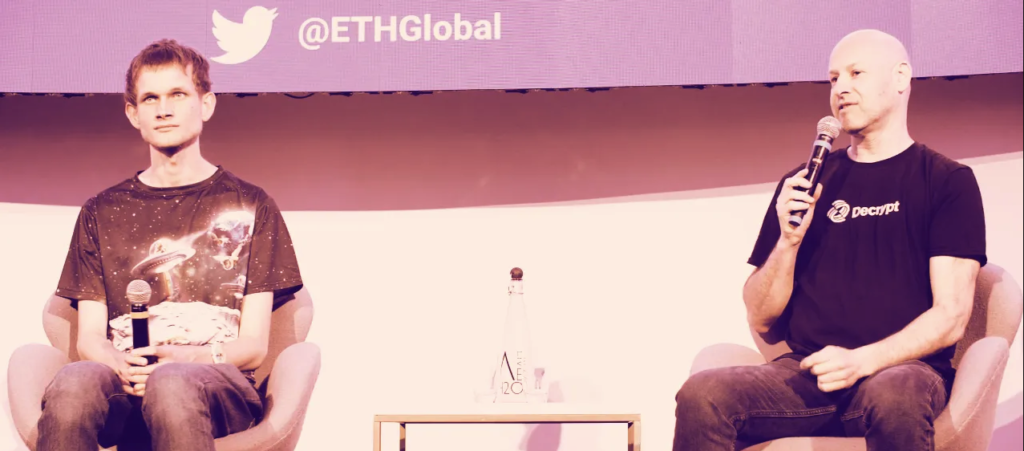
Upon launch, the Ethereum network was upheld by a proof of work consensus, pioneered by Bitcoin’s network launch in 2009, but with faster block times and a differing hash algorithm. In September 2022, the network made a change to their consensus mechanism in an event known as The Merge, which removed block creation from the open-competition, universal forgetful function innate to proof-of-work to a proof-of-stake consensus mechanism, which rewards current stakeholders with both the privilege of constructing blocks and ordering transactions in addition to a relative share of newly-issued Ether in the form of yield.
Before “Ethereum 2.0” could launch, a proliferation of new wealth was generated on top of the blockchain in the form of the aforementioned stablecoins: tokens pegged 1:1 with an underlying dollar asset in a partnered bank. This is particularly of note on the distributed ledger of Ethereum due to the nature of blockchain “forks,” in which the string of blocks diverges into two separate entities due to a disagreement of consensus by the network participants. For example, the Ethereum Foundation had amassed a fortune of nearly $150 million dollars worth of Ether set to be distributed for philanthropic ventures voted upon by the participants in the decentralized autonomous organization, or DAO. But one morning in September 2016, nearly a third of the funds, amassing to around $60 million worth of Ether, was drained by hackers using a code exploit. Even after “a white-hat counterattack,” the hacked funds would “ultimately amount to around 5% of all the Ethereum tokens in existence at the time.” This led the Ethereum Foundation to a difficult decision: honor the concept of “code as law”and allow the hackers to keep the funds, or break the immutability of the blockchain and “roll back” the transactions to return the funds. The Ethereum Foundation decided to take the latter path and return the funds to the DAO, and thus the perceived nature of Ethereum’s immutabilty and decentralized nature was called into question.
David Z. Morris summed up the debate as part of CoinDesk’s “CoinDesk Turns 10” series in May 2023:
“But, partly under the influence of vocal Bitcoiners, there was a robust opposition to this pragmatic move. To them, the ‘irregular state change’ was not just a kind of cheating, but a deep betrayal of the entire point of a blockchain. Some vocally hewed to the ‘code is law’ ethos still prominent at the time – the idea that blockchains should supersede courts and nation-states as arbiters of fairness. Under some versions of this idea, if you figured out a way to steal money via hacking or exploiting a blockchain, you had earned it fair and square.
But the deeper point was simple trustworthiness. If Ethereum could be patched to take away a user’s funds – even if that user was a hacker – it raised the possibility that the same thing could happen to anyone. Wouldn’t that, hard fork opponents argued, be even more harmful to the integrity of Ethereum than letting a hacker own 5% of the chain?
This ‘code is law’ contingent would demonstrate the full scope of blockchain democracy by choosing to stick with the old chain after the fork. This chain – where the hacker still had much of their hoard – came to be known as Ethereum Classic. ETC enjoyed a lot of support in its early years, and still has adherents today, though it has inevitably lagged behind Ethereum in both market interest and technology.”
This “irregular state change” which led to the split of Ethereum and Ethereum Classic is important for many reasons, including implications of a centralized cartel controlling consensus. It is particularly important, however, in how it applies to tokens on chain that represent real world assets, including stablecoins. When a blockchain forks, as it did in this case, the 1:1 pegged assets suddenly become 2:1. In the case of stablecoins, this meant that there were two dollar-pegged tokens for each dollar in a partnered bank account. Naturally, this becomes a problem of choice for the banking partners in regards to which token they honor with their redemption mechanisms that turn these dollarized on chain assets into actual dollars. The banks that back USDT and USDC, in effect, are now given the power to chose which fork of the chain retains the 1:1 pegged tokens, and which chain loses out on the billions of dollars of tokenized USD by no longer honoring their redemption. Perhaps of note, this is simply not the case for chain native assets, such as Bitcoin or Ether, which retain their existence despite a fork occurring, exemplified in the case of the aforementioned Ethereum Classic as well as with Bitcoin Cash.
With stablecoin issuers becoming the dominant economic weight on the Ethereum protocol over the native Ether token, the banking partners and the infrastructure providers for these tokens quickly took an important lever of control from the Ethereum block producers in their newly found ability to crown the winning fork. This idea was exemplified when, at the onset of The Merge, both Tether and Circle came out in support of the blockchain’s transition to Proof-of-Stake, eliminating concerns of a miner-driven hardfork. While Ethereum promotes itself as a protocol that brings financial autonomy back to the users and away from the bankers that dominate traditional finance, this very mechanism dissolves this illusion and gives the power right back to the entities behind tokenized dollars.
The dollarization of Ethereum, while perhaps unknown to its retail users, was key to ensuring the successful consensus mechanism pivot to proof-of-stake –– a state change that would further entrench the infrastructure providers and compound the key stakeholders’ control over the state of the protocol. William Quigley, a long-time business partner of fellow Tether co-founder Brock Pierce and a key member of Idealab and their spin-off Clearstone Ventures – the first institutional investors in PayPal – spoke of the differing classes of users that would be created in such a consensus mechanism:
“I would like to see two classes of token holders, we’ll call it the infrastructure class and the consumer class. And the infrastructure class can have at it with all the Byzantine fault tolerant decentralized systems, voting and staking, and all that stuff. And then there would be another class that strictly wants to use the blockchain to facilitate some transaction in the same way we all know that, when we use a credit card, we understand there’s somebody who [has] servers that are doing identity management, fraud management, and connecting APIs to banks. And then, there’s you and me using our credit card to buy lunch… We thought, it’s going to be very hard for people to use the current state of blockchains. But, if proof of stake, which is a consensus mechanism, can evolve the way we were hoping, we’ll be able to allow a lot of people to trade virtual items cheaply and very quickly.”
Pierce himself seemed to echo these sentiments for The Merge in a conversation with E-Crypto News in which he stated: “Well, I would never suggest that anything is going to upstage Bitcoin. But, clearly, with the Ethereum 2.0 upgrade, Ethereum is in a good position to do things.” In the same interview, Pierce asserts that he is not interested in dissolving the current system, but rather using blockchain to create a fail-safe for the traditional financial system. “I’m deeply concerned about the state of the world right now. I’m not in blockchain, in cryptocurrency because I’m against the system. I’m in this space because I’m concerned the system may fail and that we’re plan B.”
With respect to the development of this change of consensus, the Ethereum Foundation and other open-source Ethereum developers found themselves with quite a substantial task in writing and testing code that would facilitate The Merge. This novel engineering feat required outside help, and the Ethereum Foundation called upon Antithesis, a Northern Virginia-based startup that had been founded in stealth in 2018, to help bug test the state change. “Antithesis is an exciting and unique tool for debugging blockchains and distributed systems,” said Danny Ryan, a lead researcher for the Ethereum Foundation. “We used it extensively when testing the Merge. Antithesis was able to deterministically explore and find bugs in very exotic states and scenarios, ones that would have been nearly impossible to hand-code and unlikely to be hit in less stateful, traditional fuzzing.” According to Antithesis’ website, the Antithesis team “watched it happen together with Ethereum leadership at a private Merge party in Denver” on September 15, 2022, and further detailed their experience in a case study also published on their website:
“The Ethereum Foundation began working with Antithesis about a year before the Merge occurred, drawn by Antithesis’s unique ability to explore unexpected execution paths of complex software systems inside of a simulated environment, with perfect reproducibility. After a successful proof of concept, testing work began in earnest—marking the first time a cryptocurrency network had ever been tested in this way.
Antithesis worked with the Ethereum Foundation team to package their system for the Antithesis environment, create a realistic workload, and define the expected properties of their system. Antithesis ran Ethereum’s entire network (including the proposed Proof of Stake code) inside of the Antithesis environment. Antithesis stress-tested this simulation of the Ethereum network by injecting a variety of faults (network issues, hardware failures, frozen processes, etc.), which were able to drive the Ethereum network into states that had never before been achieved by Ethereum’s testing tool, but which might occur in the real world.
As the Merge codebase evolved over the next year, and as more of the eight total Ethereum execution and consensus clients were added, Antithesis continuously tested new versions of the code and reported any newly discovered issues. As new issues were found, Antithesis worked with the Ethereum Foundation team to identify which of them represented critical bugs…
Antithesis’s continuous testing process led to the discovery and resolution of dozens of serious bugs within the Ethereum network’s codebase prior to the Merge.”
According to their February 2024 press release that launched the company out of stealth, Antithesis had been “working with the Ethereum Foundation about a year ahead of the Merge,” helping “find and fix several serious bugs in the lead-up” and they “continue working with them today.” Antithesis was founded by members of the FoundationDB team, later acquired by Apple in 2015 in order to “underpin Apple’s cloud infrastructure,” which was funded by Satellogic-investor Tuesday Capital, William Draper’s Sutter Hill Ventures, and early Facebook investor Ron Conway’s SV Angel. This press release also boasts of partnering with engineering teams “at a bunch of organizations with big and complicated systems whose reliability they consider critical,” including MongoDB and Palantir.
Palantir, as discussed in The Chain of Issuance, is heavily associated with the U.S. national security state, and was initially developed as the anti-fraud algorithm for PayPal before being officially formulated as a separate company by Peter Thiel, Alex Karp and others in 2003. MongoDB was founded in 2007 by Dwight Merriman, and was funded by the CIA’s venture firm In-Q-Tel in 2012. Merriman had previously founded DoubleClick in 1995, which was later acquired by Google in 2007. This acquisition, according to Bloomberg reporting in 2023, led “the U.S. Department of Justice and eight states” to argue “was a first step in Google’s march to monopoly.” According to Antithesis, the company “worked with MongoDB for several years, helping them test their core server software as well as their WiredTiger storage engine.” MongoDB’s advisory board includes board member of Tether-funded Satellogic Tom Killalea as its Chair, as well as PayPal’s first CFO, Roelof Botha, in addition to two members of Greylock Partners, Dev Ittycheria and Chip Hazard.
With the majority of payments on the various blockchains across the cryptocurrency industry now occurring using stablecoins, it is no wonder why those connected to both the U.S. national security state and the largest e-commerce platform in the country, PayPal, are interested in the infrastructure behind them. Howard Lutnick, the CEO of Cantor Fitzgerald (which holds the majority of Treasuries backing Tether’s USDT), expressed an understanding of the trust involved in tokenized assets on blockchains, citing that he is “a fan of crypto, but let me be very specific: bitcoin, just bitcoin… The only asset people could have held where no one could take it? Bitcoin.” He further explained that “with Tether, you can call Tether, and they’ll freeze it, with Ethereum, you can call Joe Lubin.”
According to blockchain analyst Nic Carter, during 2023, “stablecoins touched as much as 80 percent of value settled on chain,” leading Carter to propose that “blockchains are all about dollars.” This assumption, which is heavily backed by on-chain transactional data, led J.P. Morgan to develop Quorom, a permissioned version of Ethereum, later acquired by Lubin’s ConsenSys. Lex Sokolin, the CMO of ConsenSys, made note at the time of the acquisition that “nearly $7 billion in tokenized USD travels the Ethereum network. This is the main path I see to adoption – not more trading of alternative protocol tokens.” Lubin told Forbes that “the platform is currently being used by 10 central bank digital currency (CBDC) projects and is close to 100 customers overall.” This privatization of Ethereum by J.P. Morgan’s Quorum is perhaps simply an insurance mechanism for their own significant stake in Ethereum’s critical infrastructure via their investment in Lubin’s ConsenSys.
In March 2022, thirty-five former ConsenSys employees filed a request for an audit to “investigate serious irregularities” at ConsenSys AG (CAG). According to the allegations, in August 2020, “fundamental intellectual property and subsidiaries were illegally transferred from CAG into a new entity, ConsenSys Software Incorporated (CSI), in exchange for 10% ownership of CSI and an offset of a $39 million loan by founder Joseph Lubin.” According to the press release, this transfer was known internally as “Project North Star,” which “resulted in legacy financial institutions such as J.P. Morgan Chase acquiring an influential stake in MetaMask and Infura,” two of “the most widely used infrastructure tools in Ethereum.” Due to Lubin being the majority shareholder of both firms, the request claims that the “transaction was to the detriment of the minority shareholders of CAG” while benefiting “Joseph Lubin personally.” MetaMask, an Ethereum-based browser wallet has “become the industry standard” with over “21 million monthly active users,” which led to “more than $10 billion in trading volume.” Infura is a system critical stack of developer tools for Ethereum, used by over 350,000 developers, leading it to be dubbed “too big to fail.”
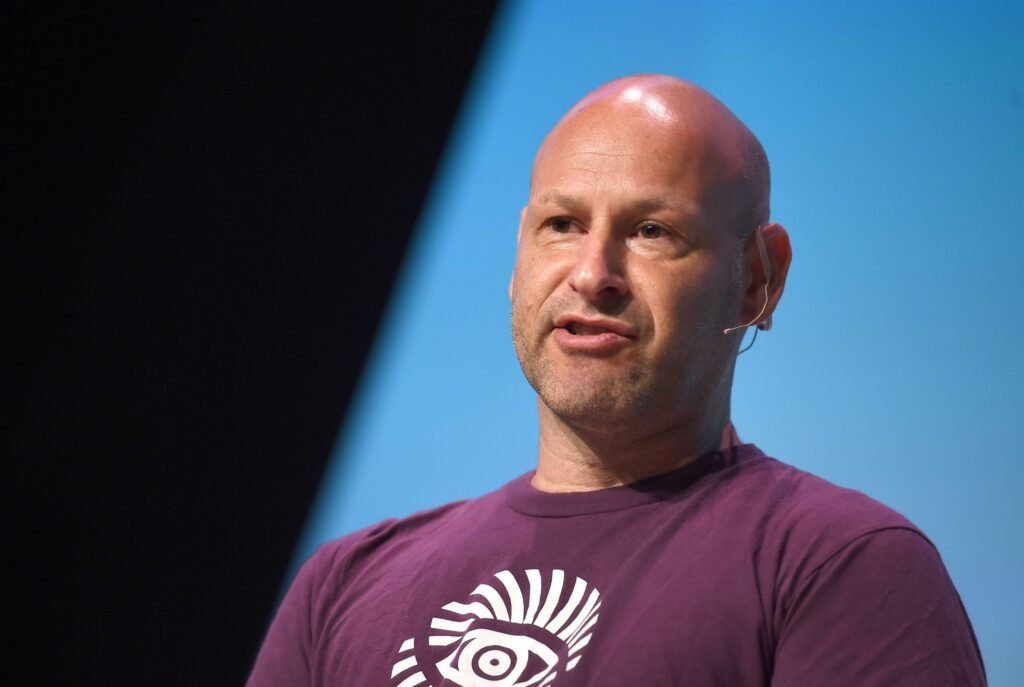
This concerning centralization has simultaneously led the same parties to begin the chain-agnostic issuance of stablecoins. Perhaps no company better exemplifies this push than Reserve. Reserve was founded in 2017 by Miguel Morel and Nevin Freeman as a solution for mitigating the trust assumptions innate to tokenized dollars on blockchains. According to its website, Reserve aims to create “money that doesn’t inflate like USD, but isn’t volatile like Bitcoin” by “bundl[ing] stocks, bonds, gold, real estate, and more into an index” to use “as money.” The Reserve Protocol “lets anyone deploy a token that is issuable and redeemable for a basket of any other tokens.”
In a conversation with Paul Barron Network, Freeman described their reasoning for creating a stablecoin based on a basket of other stablecoins:
“We decided not to issue our own dollar-backed stablecoin ourselves but rather to to piggyback on top of dollar-backed stablecoins that already exist. The way that that works is today the RSV token is backed by USDC, Paxos and TUSD… other stablecoins could be swapped out and be part of that basket. That’s what we mean by a flexible pool of stablecoins. And let me talk about ‘Why flexible?’ What’s the point of the flexibility? The point of the flexibility is so that if any one of those stablecoins encounters any kind of issue; you know if the market comes to be concerned about its backing, or if there ends up being regulatory pushback and maybe that stablecoin has to shut down or anything like that, we have robustness to that because those coins can be traded out actually in like a somewhat decentralized way that doesn’t just depend on us.” [emphasis added]
The Reserve Protocol today is mostly and best suited to be “used for bundling DeFi assets together to create yield-bearing USD stablecoins and other composite assets.” Yet, with the tokenization of real world assets (RWA), Reserve “believe[s] the protocol can enable new asset-backed currencies that are mostly or fully independent of fiat money.” This is a sentiment supported by Thiel, who backed Reserve in 2021, in a conversation with USA Today in 2014:
“Now the the second theme is a little bit more speculative and that is getting rid of money altogether, going from digital dollars from any kind of government-backed currency to purely private currencies. And what a private currency or private money, I think fundamentally means, is that there is no medium of exchange. You exchange value for value rather than exchanging value for something the government says has value…you might conduct business by trading not dollars but trading little slivers of the S&P 500 or of particularly large stocks, like Microsoft or something like that…That’s where you have the kind that becomes, in effect, a de facto currency.” [emphasis added]
Freeman would further this proposition in a presentation for the Wences Casares-chaired Coin Center‘s “Cryptocurrency and Hayek Conference” in May 2021 titled “Private Money”:
“I think that with the issuance of private money in the form of cryptocurrency, something I reflect on pretty frequently is that it feels to me like not all that long ago it wasn’t particularly socially acceptable in the U.S., or perhaps even around the world, to issue private currencies. I think that bitcoin and cryptocurrencies have actually really significantly changed the social acceptability of that…I’ll bet many of the people on this call can remember back when there was a narrative of bitcoin becoming a currency. People actually thought that there’d be a lot of commerce transacted in bitcoin back at the beginning of the movement and I think the collective giving up on that dream is perhaps another part of the explanation. You’ll hear a lot of people in the establishment talk about how they’re not very threatened by cryptocurrency because bitcoin can never really compete as a form of money.”
Alongside Thiel, Reserve was funded by The Digital Currency Group and Coinbase Ventures, among others. When it was in development, its ranks featured a team “composed of 20 people including Google and OpenAI veterans” complete with “an advisory relationship with Patomak Global Advisors” which is led by former SEC Commissioner Paul Atkins. Atkins was a partner of PricewaterhouseCoopers and its predecessor firm, Coopers & Lybrand after beginning his career as a lawyer in New York with Davis Polk & Wardwell. Since 2017, Atkins has served as Co-Chair of the Token Alliance, a subset of The Digital Chamber of Commerce. Reserve founder Morel eventually left Reserve in 2020 to found Arkham Intelligence, a blockchain analytics company funded by Thiel, Thiel-protégé Sam Altman, and Coinbase, among others.
Reserve and Arkham are far from the only projects in the space supported by Thiel. Yet, it is his ground-floor involvement with Block.One that best exemplifies the dangers of coordinated cartels controlling consensus of a blockchain. It is also significant that this investment has garnered the company (not to mention its investors) billions of dollars in Bitcoin, after completing the largest ICO to date with EOS.
Block.One: The Largest ICO
“I want to go back to 2008. Stock market crashes, so does our faith in Wall Street and the financial system as we know it. For a century now, money has revolved around these hundred-year-old institutions. Yet here we are watching Wall Street buckle overnight. As a society, we start waking up to the fact that these institutions that we’ve been taught to trust our money with, the ones that we’ve been taught to depend on for day-to-day life, they just aren’t trustworthy or dependable at all, and real people are paying the price. And all of a sudden we start wondering, is there a better way, a fairer way, for this whole system to function? Innovators get to work and Bitcoin is born. Cryptocurrency is born. Now it sounds quite technical, but it’s really just visionary.
Cryptocurrency enabled a new approach to money, commodities, and finance in general. One that doesn’t need to depend on invisible middlemen and can be built and run by its users through transparent sets of checks and balances. And we all know what happens from there. It just takes off, but amidst this Bitcoin and cryptocurrency boom, an even bigger opportunity is what Block.One is focused on: the technology it’s all built on, the blockchain. And blockchain isn’t just for finance. Shipping, health care, those drones that will soon be delivering your dinner, virtually anything the internet touches, blockchain can improve, when making the data systems underneath run more securely and transparently than ever.”
– Brendan Blumer, June 2019
Prior to the founding of Block.One, Brendan Blumer had founded Gamecliff, a company that “automated the valuation, purchase, and resale of in-game items in the world’s largest online video games” in 2001. He was quickly approached by an industry competitor, IGE’s Brock Pierce, when Blumer was only 16 years old. “I’m still very good friends with him,” Blumer told Mixergy in 2011. “He was the one who initially found me when I was sixteen. And I flew to L.A, met with him very quickly. He hired me and he is actually one of the only two relationships that had survived IGE. So he’s been great, he’s a great person to learn from.” When Blumer was 19, he sold Gamecliff to Pierce’s IGE. By 2007, Blumer had launched Accounts.net, which “enabled the sale of in-game avatars” and “within 90 days” the business earned “over $1 million in monthly revenue.”
Blumer described his new venture as requiring “a high level of trust,” and relied on PayPal as the “universal payment for the first five years.” “That’s where the reputation came in… I would select a virtue asset, once I have received them… we would send it with PayPal.” He also noted that his company concurrently relied on Google for advertising his online marketplace, claiming his “marketing bills were about $150,000 a month with Google.” According to Blumer, Accounts.net had affiliations with “the Wallenbergs,” a Swedish banking dynasty referred to as “the Swedish answer to the Rockefellers” by Quatr. While the company “had visions to go public,” this aspiration failed to coalesce.
“I started a company called IGE and so I built a supply chain of 400,000 people in China that were playing video games professionally to mine digital currency in games like World of Warcraft and so I was the main market maker for all of the virtual worlds globally, rolled up Korea and most of the major territories, and in that process I raised a bunch of money from Goldman Sachs. My right hand was a guy by the name of Steve Bannon who then became CEO and that’s how I met Brendan. Brendan was running one of the leading businesses for the selling of characters in the games.”
– Brock Pierce at BlockShow Asia 2017
By 2010, Blumer launched Okay.com, an “enterprise data sharing platform for real estate brokers in Asia,” which later merged with the real estate company Asia Pacific Properties, which boasts clients such as Apple, Bank of America, Merrill Lynch, BNY Mellon, Caterpillar, Cisco Systems, Citigroup, Dow Chemical, Estée Lauder, Google, MasterCard, Merck, PepsiCo, Pfizer, Thermo Fisher Scientific, and Visa.
An early investor in blockchain, Blumer transitioned to a “full-time involvement in the space” in 2016 when he met Block.One’s co-founder, Dan Larimer. Larimer, the son of a defense contractor, also worked “with American defense” in “helping produce drones and uncrewed vehicles” for “Raytheon and Torc Robotics.” In 2007, he “had an epiphany” that he was “done with building mass destructive weapons” and thus “quit working for the Defense [industry].” Larimer, who “also had a failed virtual reality startup,” graduated Virginia Tech and discovered Bitcoin in 2009 when it was worth “5 cents” and “bought $20 worth.” Larimer would eventually go on to found BitShares and Steemit, two blockchain protocols complete with their own monetized token, leading Larimer to be named in Forbes’ “The Richest People in Cryptocurrency” alongside Pierce, Lubin, Blumer, Hoskinson, Buterin, and others.
Blumer, Larimer and Pierce would go on to form Block.One in 2016, only to be promptly backed by “a bevy of billionaires,” including Thiel, currency speculator Louis Bacon, hedge fund manager Alan Howard, Bitcoin mining hardware giant Bitmain, former Goldman Sachs partner and Galaxy Digital CEO Mike Novogratz, Thiel-protégé Christian Angermayer, Fred Wilson’s Union Square Ventures, and Multicoin Capital, among others. Notably, Block.One’s Seed Round was funded by Pierce’s Blockchain Capital, covered extensively in The Chain Of Issuance, alongside Matthew Roszak’s Tally Capital. Roszak had previously joined Blockchain Capital as a limited partner during their first fund in 2013, and “gave Richard Branson and Bill Clinton their first Bitcoins.” Block.One would further its financial status in its “record-breaking initial coin offering” for their EOS blockchain in 2017, which “netted the blockchain firm $4.2 billion.”
Despite the billionaires backing the project and the incredibly successful offering, the firm quickly found itself at the center of controversey regarding its ICO, becoming the subject of a 14-page report from Integra FEC published by Bloomberg that “highlights suspicious trades that manipulated the price of Block.One’s EOS token and lured eager crypto investors.” According to Integra’s report, the EOS ICO saw “the equivalent of $814.6 million in Ether ‘recycled’ between potentially connected exchange accounts” who “quickly and repeatedly” sold EOS for Ether and “used the proceeds to buy more EOS,” which was “typically sold… at a loss.” The Ether was then “moved to exchanges in a complex way,” which according to Protos, was “presumably to render tracking the funds as difficult as possible.”

Integra’s research lead, University of Texas finance professor John Griffith, stated that “the suspicious accounts created legitimacy and the perception of wide-scale interest in EOS, and thus were able to make EOS move from an obscure ICO to become a token of widely perceived value.” Griffith described the demand for EOS tokens as “seemingly artificial,” which had two profound effects on the ICO: First, the “phoney buys” manipulated EOS’ price higher, and “second, it created the false impression of value of the token, which enticed others to want to purchase the ICO token.”
https://web.archive.org/web/20240112222538/https://thenextweb.com/news/eos-mainnet-nightmareThe ICO left Block.One with over $4 billion, including one of the largest-known stashes of Bitcoin, plenty of cash, and 10% of the total supply of the EOS token. Interestingly, the EOS constitution, drafted by the Block.One team, which had recently changed “the name of the token symbol from EOS to SYS,” contains Article V, which states that “this blockchain has no owners, managers or fiduciaries; therefore, no Member shall have beneficial interest in more than 10% of the SYS token supply.” As noted by The Next Web, “coincidentally (not), that is the exact amount of the EOS tokens Block.One publicly owns,” which they propose “is probably the company’s way of saying that they do not want anyone to have more control over the EOS ecosystem than they have.” The Next Web further notes that “other clauses in the constitution call for ‘monitoring,’ ‘adjudication,’ ‘penalization,’ and ‘arbitrations,’ which “establish Block.One as a central authority governing the blockchain.”
In fact, experiments by Whiteblock, a blockchain testing company which was commissioned by Lubin’s ConsenSys, came to the conclusion that EOS’ protocol “may not actually be a blockchain” at all. Whiteblock proposed that “the EOS token and its RAM market” is “essentially a cloud service for computation” which “is built on an entirely centralized premise” and thus “lacks some of blockchain’s most fundamental aspects, like immutability.” “EOS is not a blockchain, rather a distributed homogeneous database management system, a clear distinction in that their transactions are not cryptographically validated,” Whiteblock argued, as noted by The Next Web. “EOS block producers are highly centralized and users can only access the network using block producers as intermediaries. Block producers are a single point of failure for the entire system.”
A significant portion of the paper is “dedicated to proving there is no proper protocol for preventing block producers from colluding to maintain their role as block producers,” with “little protection against bad actors forming cartels to crash the entire network.”
“Conceptually, it is impossible for EOS to implement Byzantine Fault Tolerance. A true BFT system would not be susceptible to cartels forming in the system, [but] […] cartels are easily formed in EOS, therefore negating any effort to claim BFT… All of these actions operate in an environment that lacks cryptographic validation of the contracts and transactions… EOS is fundamentally the same as a centralized cloud computing architecture [client/server] without the fundamental components of a blockchain or peer-to-peer network.”
This infrastructure “affords developers practically infinite amounts of ‘undos,’” allowing EOS transactions to “be reversed by those with access (such as block producers),” leading to the reported cases of reversed transactions and frozen EOS accounts, decisions “knowingly taken in violation of the rules laid out in the EOS constitution.” Zak Cole, Whiteblock’s Chief Technology Officer, noted “the ability to undo history (or anything for that matter) related to state is a notion that directly conflicts with the essential definition of what can be considered a blockchain, which is characterized by immutability of data.”
In Fall 2018, an anonymous source leaked an internal document claiming that “collusion, mutual voting, and pay-offs” are “commonplace amongst EOS block producers,” particularly the cryptocurrency exchange desk Huobi. The allegations were mostly proposing that “Huobi and other powerful block producers” were “mutually voting for each other in order to retain status and secure passive income” with claims that “specifically Huobi receives EOS cryptocurrency directly in exchange for its votes.” Huobi denied the allegations, despite Huobi being delegated as the third most powerful block producer, and receiving 833 EOS per day. Bitfinex, the exchange associated with the issuance of Tether’s USDT, held nearly a dozen wallets each “with more than three million EOS staked,” which were “used to vote in the initial round of elections.” Collectively, Bitfinex represented 40 million votes of the nearly 370 million votes cast overall. Concerns eventually grew that Bitfinex was “using EOS stored on it’s exchange by users” to “increase its voting power,” although this was denied by Bitfinex.

“Currently, Bitfinex is voting between 10 million and 40 million EOS for up to 30 other BPs,” the petition to limit EOS’ delegated voting method states. “These votes go a LONG [sic] way to ensuring the recipients are among the Top 21… In most cases, Bitfinex’s votes make up between 50 [and 90 percent] of […] BP’S TOTAL VOTES [sic]… For the record, I am in no way anti-Bitfinex. They are just one example – there are other [offenders too].”
Despite the alleged cartel control over the EOS protocol, when asked “What’s stopping Larimer, Blumer and the rest of the Block.One team” from taking the billions raised in their ICO, Larimer stated “Absolutely nothing” because “if there was anything stopping us, they would make it a (regulated) security.” Larimer clarified he meant “nothing legally,” stating “our vision for what we want to create is what drives us.” Despite this answer, the SEC eventually did fine Block.One $24 million for “conducting an unregistered initial coin offering of digital tokens (ICO) that raised the equivalent of several billion dollars over approximately one year.” Block.One would also later settle a $27.5 million suit with Johnny Hong and the Crypto Assets Opportunity Fund despite stating “Block.One believes this lawsuit was without merit and filled with numerous inaccuracies. However, accepting this settlement allows us to focus more time and energy on running our business and delivering new products.”
Legal hangups aside, Block.One would eventually launch a social network to run on the EOS blockchain called Voice. In December 2019, they held a meeting with the SEC to “discuss our vision and plans for Voice: what it is, what we are trying to achieve, and how the tokens will work” to demonstrate they are “committed to consulting with key stakeholders – in this case regulators – from the start in an open and transparent manner.” While there is little to show of Voice today, Block.One apparently spent $300 million “on the social media app, Block.One confirmed to The Block.” Nearly a tenth of this was spent on the domain Voice.com, which was purchased from MicroStrategy for $30 million, a record “by a large margin” for a public domain-only sale in an all-cash deal facilitated by GoDaddy. MicroStrategy, an enterprise analytics and software company best known for being helmed by Bitcoin Bull CEO Michael Saylor and holding one of the largest known Bitcoin stashes on its balance sheet, owns a nice catalog of valuable domain names, including Saylor’s Alarm.com, which includes alleged 9/11-insider trader Mayo Shattuck on its board. Investment bank Morgan Stanley at one point held 792,627 shares of MicroStrategy, according to a filing with the U.S. Securities and Exchange Commission, for a 10.9% stake of the McLean, VA company.
Despite the failed venture, Blumer made note of Voice’s plan to “require government IDs,” stating “it’s never been more important to know that who we are interacting with and who we are getting information from is a real person who’s accountable for what they share” with a source telling CoinDesk that “Block.One is going to pay for identity verification on every single user, though the precise form those checks will take will vary by country.” This would-be requirement was echoed by Blumer’s November 2020 comments on how “the future is compliant open source programmable finance or ProFi”:
“Crypto compliance and regulatory frameworks are taking shape and maturing rapidly. There’s a sizable amount of consideration and processes that need to be built around organizations engaging in the space to protect themselves and the communities they engage with… Within organizations focused on compliance, this approach is core to how opportunities are seized, even if the road to offering is more time consuming. It can also mean that products need to be iterated upon to meet jurisdictional and professional service requirements…the harmonious integration of both traditional and crypto ecosystems that is facilitated by compliance will continue to pave the path of mainstream adoption.”
This notion was exemplified by Block.One’s move to Arlington, VA (within the metropolitan region of the nation’s capital) in September 2019. “We are excited to be setting up Arlington, Virginia as our U.S. headquarters. The region boasts a rich combination of security, engineering, and IT skills that we seek, and its proximity to the nation’s capital positions us close to the policy innovation around digital assets and distributed ledger technology in the U.S,” said Blumer in the press release announcing the move. “This expansion opens up important new avenues of talent expansions for us at a time when there is rapidly increasing demand for blockchain-based technologies.”
The Formation of Bullish Global
In May 2021, Block.One announced the launch of their crypto exchange, Bullish, which would operate under a newly formed subsidiary, Bullish Global, in order to create “a new blockchain-based cryptocurrency exchange” attempting to “combine the performance, user privacy, and compliance offered by central order book technology” with the “benefits of decentralized finance (DeFi) market architecture.”
Bullish, according to their press release, would leverage “EOSIO and the EOS Public Blockchain” in order to “produce a cryptographically validated, provable, and immutable audit trail of all transactions” taking place on the platform. The independent entity to Block.One, Bullish Global, raised $300 million in a venture round led by Thiel’s Founders Fund and Thiel Capital, and featuring Alan Howard, Moore Capital’s Louis Bacon, Richard Li, Christian Angermayer, Galaxy Digital’s Mike Novogratz, and Japanese bank Nomura, among others. Downstream of the generous funding, Thiel, Howard, Li and Angermayer would join Bullish Global as senior advisors. With the formation of Bullish Global, Block.One fronted $100 million in cash, 20 million EOS (worth $215 million at the time) and 164,000 bitcoin (worth $8.2 billion at the time), mostly raised from their record-setting ICO. A filing with the SEC demonstrated that “Bullish Global and its subsidiaries in the Cayman Islands, Gibraltar, and the United States maintain bank accounts and balances with banks in the United States.”

Two months later, in July 2021, Bullish announced it had agreed to go public on the New York Stock Exchange via a merger with Far Peak Acquisition, a special purpose acquisition company (SPAC), within a $9 billion deal “to be adjusted at the closing of the transaction based on crypto asset prices around that time,” according to a statement from Bullish. Far Peak Acquisition refers to itself as a “SPAC focused on bringing leading financial and financial technology companies public.” Far Peak Acquisition is “sponsored by Far Peak LLC,” owned by Thomas Farley, the company’s “Chairman, Chief Executive Officer and President,” and David Bonanno, the company’s “Chief Financial Officer and Secretary,” with its press release noting that “certain funds and accounts managed by subsidiaries of BlackRock, Inc. have made an anchor investment.” Farley, who previously served as the president of the New York Stock Exchange, became the CEO of Bullish, and Bonanno became the CSO before later being named CFO. The merger was initially delayed due to the lack of SEC approval, before finally coming to an amended agreement in October 2022, and then eventually calling the merger off in December 2022.
Regardless, Thiel made glowing comments upon joining the Bullish board, noting that the firm’s “balance sheet is strong” bringing “stability and liquidity to the cryptocurrency space” via its vertical integration. “I’m happy to join Bullish as an investor and advisor as it gets started on a long and fruitful journey.” These sentiments were echoed by Louis Bacon: “The cryptocurrency market continues to benefit from institutional adoption, and Bullish is well positioned to leverage blockchain-based market structures that will play an important role in further improving access for institutional and retail investors.”
Bullish Advisors: Louis Bacon
In regards to institutional investing, there are few people more eligible to speak on behalf of the trillion dollar industry more than Bacon, the founding CEO of Moore Capital. A former employee of Shearson Lehman Brothers and Merrill Lynch, Bacon was routinely one of Wall Street’s top earners during the 1990s, leading Forbes to describe him as “one of Wall Street’s macro-trading legends” having “cut his teeth as a commodities and currencies trader” who earned “big profits in the 1987 crash.” Two years later, Bacon founded Moore Capital using these trading profits, which would go on to be, among other things, the largest funder of Bill Gross’ Idealab. Idealab, as featured in The Chain Of Issuance, is best known as the first investor in Thiel’s PayPal and the principal owners of GoTo/Overture which holds the patent underpinning Google’s AdWord/AdSense business model. Moore Capital was keen on “recruiting traders from big firms like Goldman Sachs and Citigroup,” including “former top Citi executive Michael Carpenter.”
Bacon quickly became a legendary hedge fund manager and currency speculator, and was even once said to be “more powerful in the financial markets than George Soros.” Bacon was the son of Zachary Bacon Jr., who ran North Carolina real estate operations for Prudential and Merrill Lynch, and when Louis’ mother died in 1983, his father remarried the sister of Tiger Management founder Julian Robertson. Louis’ brother Zack, friends since college with Bitcoin-bull and billionaire Paul Tudor Jones, worked at Soros Fund Management as a trader, alongside Jones. Jones and Louis Bacon would routinely find themselves, often alongside Soros himself, as the top earners of Wall Street in their heyday, mostly through their astute calls during moments of global turmoil.

Moore Capital hit 86% gains in its first year “largely [due] to Bacon’s decision to short the Nikkei index just before the Japanese markets collapsed” and similarly made a significant profit by “anticipat[ing] Saddam Hussein’s invasion of Kuwait” and going “short stocks and long oil.” Bacon’s knack for politically-influenced currency speculation is also apparent from his 1998 plays against the Hong Kong dollar, with Moore Capital, alongside Soros’ Quantum Fund and Robertson’s Tiger Fund, taking such large short positions that the Hong Kong government was forced to purchase “HK$58 billion” worth of shares to “stem an unprecedented wave of selling” which threatened to “send the Hang Seng Index spiraling down.”
While the HK government’s measures were mostly successful, the Mexican government had been less so three years earlier, in 1995, after trade measures made during the Clinton administration turned the peso south. Currency speculators made billions of dollars by shorting the peso, leading The Boston Globe to report that “traders such as George Soros, Paul Tudor Jones, Louis Bacon…are credited – or blamed, as the case may be – with singlehandedly changing the value of national currencies.” A handwritten note from the Reagan-appointed Judge of the U.S. District Court for the Southern District of Mississippi Henry Barbour in January 1995 read “Dear Louis,” referring to Bacon, says “Haley [Barbour, Henry Barbour’s cousin and then-head of the Republican National Committee,] particularly appreciated picking your brain on the Mexican peso deal” and that “he [Haley] literally passed on what he heard that day to [Senator Bob] Dole and [Speaker Newt] Gingrich.” Soros, alongside currency speculator and Tether and Deltec-affiliated Joe Lewis, would make billions in 1992 after betting on a falling British pound, only for both of them to repeat this trade in 1995 with the Mexican peso, “profiting from that country’s economic crisis” while “turning his millions into billions.”
Another memo from Barbour to Kim White, a head associate of Bacon, asked “let me know how the Dole & Gingrich contacts are working or if there are some others you want to hook up with.” The Enterprise-Journal, which published the memos, made note that “at the time, the U.S. was deciding whether to prop up the value of the Mexican peso” and this matter was “of keen pecuniary interest to Bacon.”
Despite his ties to the RNC in the 1990s, Bacon’s Moore Capital was fed investment from Clinton Foundation donor Arpad “Arki” Busson. Busson is best known for founding the European Institute of Management (EIM), founding the children’s charity Absolute Return for Kids (ARK) alongside the Soros-funded Ian Wace and for being listed in Epstein’s Black Book under his nickname “Arki.” Somehow not his only connection to controversial billionaire sex traffickers, Bacon would end up in a public dispute over his Bahamas estate in 2015 with his neighbor, accused mass rapist Peter Nygard, who was once referred to as “Canada’s Jeffrey Epstein.” In fact, lawyers funded by Bacon himself “accused Nygard of raping teenage girls in the country.” Coincidentally, Bacon’s estate in the Bahamas also happens to neighbor the property owned by Jane Lewis, the wife of accused insider trader and aforementioned currency speculator Joe Lewis, who himself sold a Bahamian property worth $76 million to FTX-founder Sam Bankman-Fried.

Bacon was eventually fined heavily for market manipulation by U.S. regulatory agencies and has been associated with numerous other allegations. In April 2010, the U.S. Commodity Futures Trading Commission fined Moore Capital for manipulating metal markets, asking for $25 million to settle allegations that “it attempted to manipulate platinum and palladium prices from November 2007 through to May 2008.”
In April 2022, Bacon’s Moore Strategic Ventures would invest in Bitcoin Lightning startup Lightning Labs in their Series B. In a press release at the time, Lightning Lab’s Elizabeth Stark made note of the startup intent to use the recently raised funds to bring stablecoins to Bitcoin: “As a result, bitcoin will route dollars, fiat, and everything in between. This is how we bitcoinize the dollar.” Bacon was joined in the Series B raise alongside Silvergate Bank CEO Alan Lane and fellow Bullish investor Alan Howard’s Brevan Howard Asset Management, among others. Stark had previously been approached and offered funding from Jeffrey Epstein via MIT Media Lab, but declined to take the funds. Epstein’s interest, himself a currency speculator, also speaks to the broader interests of notorious currency speculators in backing major players in the cryptocurrency industry.
Bullish Advisors: Alan Howard
Alan Howard, the CEO of Brevan Howard and previously an employee at Salomon Brothers, joined the Investor Advisory Committee on Financial Markets set up by the Federal Reserve Bank of New York headed by then–New York Fed president William Dudley in 2009 “amid the wreckage of the financial crisis.” Howard was joined on the IACFM alongside Paul Tudor Jones, Rick Rieder of BlackRock, Joshua Harris of Apollo, and Mary Callahan Erdoes of J.P. Morgan, among others. It was reported that “minutes from the meeting show the IACFM discussed the likelihood and timing of the Federal Reserve raising its target rate range.”
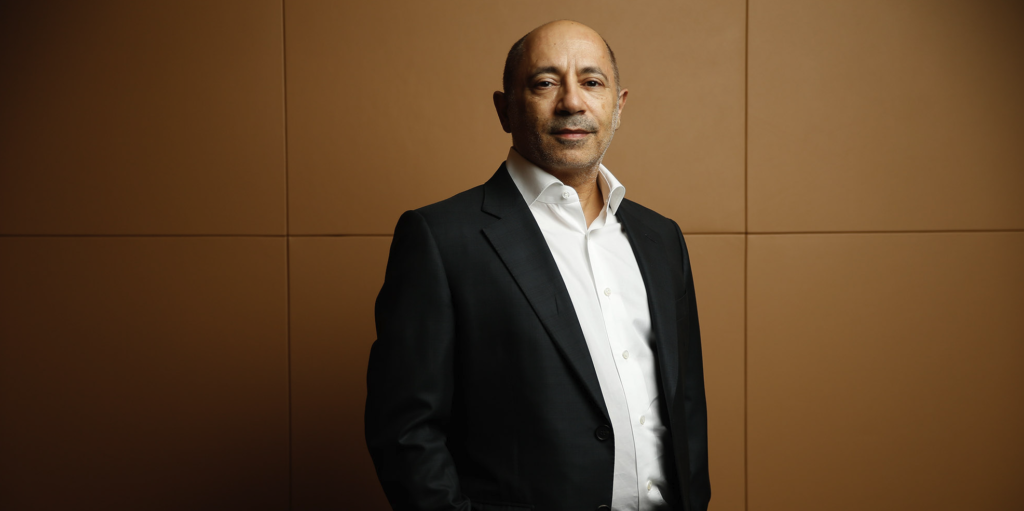
Howard, again alongside Jones, would become an angel investor in the now-collapsed cryptocurrency exchange FTX, and even led the largest crypto hedge fund launch as of April 2022 in their $1 billion raise for their BH Digital unit. BH Digital was founded in 2021 when Brevan Howard pulled Colleen Sullivan, CEO and co-founder of CMT Digital, to lead its “private and venture investment activities in crypto.” CMT Digital, a subset of the CMT Group, had invested in Silvergate Bank in addition to being a founding member of the Chicago DeFi Alliance (CDA) alongside Tether’s second largest customer – behind only FTX’s Alameda Research – Cumberland DRW. Other members of the alliance include ConsenSys investor Jump Capital, CELO network validator Volt Capital, and TD Ameritrade, among others. Brevan Howard also launched a tokenization firm called Libre on the Google-partnered NEAR protocol, giving users access to “a Hamilton Lane credit fund, the Brevan Howard Master Fund and Blackrock ICS Money Market Fund” after accumulating “$100 million assets under management” since launching in May 2024.
Howard himself personally invested in FTX, Block.One, and Bullish Global, making positive comments upon his appointment as an advisor to Bullish: “Successfully bridging the gap between digital assets and institutional actors will shape the future of the financial sector as we witness greater mainstream adoption of digital currencies, and I am excited about being involved with Bullish’s mission to give its users more value added control over their financial future.”
Bullish Advisors: Richard Li
In addition to Howard and Thiel, Richard Li – the son of Li Ka-shing, a scion of Hong Kong finance and the long-time majority shareholder of the shipping company Hutchinson Whampoa – joined Bullish as an advisor. As noted in One Nation Under Blackmail, Li’s well-connected Li Ka-shing was intimately tied, both personally and financially, to the core figures of the arms trafficking and technology transfer scandal that involved the Chinese government and figures during the Clinton administration in what is now remembered as “Chinagate.”

Regarding his own career, Richard Li began his career at the shipping company tied to his father, Hutchinson Whampoa, which has long worked closely with (and now partially owns) the Chinese government-owned COSCO. COSCO-owned vessels were later caught smuggling Chinese-made AK-47s into the U.S. in 1994. At the time, Richard Li was Hutchinson Whampoa’s deputy chairman. In 1990, the same year he joined Hutchinson Whampoa, Li later began developing STAR TV, Asia’s first satellite-delivered cable news service that streamed American television. Li later sold the company to British-Australian media mogul Rupert Murdoch in 1993. With that money, Li launched Pacific Century Group, his investment firm, which later went on to acquire AIG Investments. AIG, in addition to a lengthy history of financial crimes and receiving a massive bail-out in 2008-2009, has long-standing connections to the CIA (which persist). Part of that close connection is thanks to long-time AIG chairman Maurice “Hank” Greenberg, who had a “unique” relationship with the agency. Greenberg was particularly close with Reagan’s CIA director Bill Casey and was even offered the job of CIA director himself, but declined.
Upon Li’s investment and advisory appointment to Bullish, he stated “Bullish has built a strong team that is focused on bringing innovative and compliant solutions to market, and I’m delighted to be joining the Bullish advisory team to lend my experience in driving global success.” Fellow Bullish advisor Christian Angermayer was more economic with his praise upon appointment, simply stating: “I am Bullish.”
Bullish Advisors: Christian Angermayer
Angermayer, today mostly known for his financial and personal interest in psilocybin mushrooms as a medicine, is the founder of Apeiron Investment Group and co-founder of Atai Life Sciences. Atai was backed by fellow Block.One investors Michael Novogratz’s Galaxy Digital and Peter Thiel’s Thiel Capital, in addition to personal investments from both Novogratz and Thiel. Additionally, Jason Camm, Managing Director and board member of Thiel Capital, joined Atai’s Board of Directors upon Thiel Capital’s 2020 investment in the biotech firm. Camm and Angermayer were both named World Economic Forum Young Global Leaders, while Angermayer’s Apeiron profile additionally lists him as a member of the Milken Institute Young Leaders’ Circle, a partner of the Munich Security Conference, an advisor to President Paul Kagame of Rwanda, and a founding member of President Macron’s “Scale-Up Europe” initiative.
Angermayer was introduced to Peter Thiel in 2011 “because we’re both very interested in global politics,” he told CNBC. Thiel’s Founders Fund would become a strategic partner in Angermayer’s Elevat3 Capital at the start of 2021, after both investors, alongside Louis Bacon’s Moore Capital and Michael Novogratz, made lucrative returns off Compass Pathways’ successful IPO, the first of its kind for a psychedelics company, hitting $1 billion shortly after its debut. The IPO saw Angermayer’s stake in the business become worth $316 million. Angermayer told CNBC that Thiel is “more than an investor in the European growth venture fund,” and that “he owns part of the gross profit.”
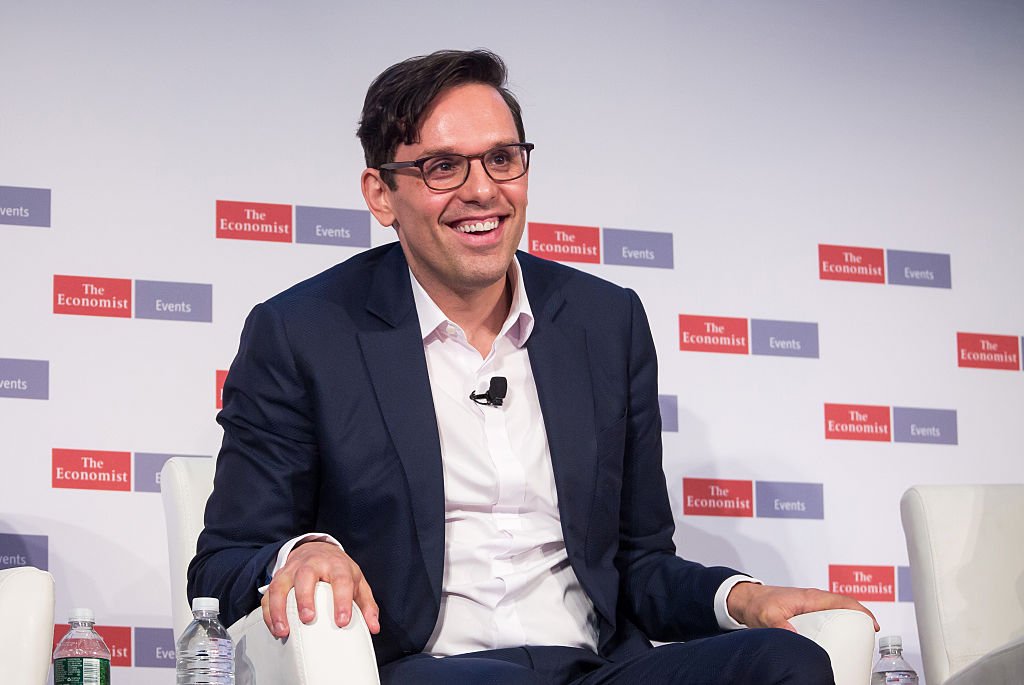
Angermayer is also the co-chair of the board of Blackrock Neurotech, which was also funded by Thiel, and is best known for creating the robotic hand quadriplegic Nathan Copeland used to fist-bump President Obama during a White House Frontiers Conference in 2016. Blackrock Neurotech would later go on to be acquired by Tether for $200 million via their subsidiary Tether Evo. Angermayer is also a large shareholder in Germany’s Northern Data, which is now 51% owned by Tether through Tether’s DaMoon subsidary after agreeing to a “strategic investment” that involved “swapping Nvidia GPUs for equity and a shareholder loan.” These 223,000 GPUs were initially purchased by Northern Data from Block.One in an August 2021 deal that left Block.One with an “interest of approximately 18.2% in Northern Data.”
Angermayer received part of his stake of Northern Data when the mining company, formerly Northern Bitcoin AG, acquired two other mining companies partially owned by Angermayer and his firms. He began raising funds for Northern Data via his Apeiron firm, charging the mining company “about $940,000” in 2022 alone, according financial statements. Northern Data would go on to report “€420 million in losses from the acquisition of the two cryptocurrency-mining companies,” leading to a “precarious financial position in early 2023” according to reporting from The Wall Street Journal.
Tether, despite “want[ing] to keep its involvement secret,” first invested in Northern Data in spring 2023, paying “€32.3 million for a stake in the company.” Angermayer received a “payment worth 5% of the deal’s value” for “introducing the two companies.” That summer, Tether “bought another €48 million of Northern Data shares,” with Angermayer receiving “another 5% fee for the transaction,” bringing the total paid to the German entrepreneur to “a total of €4 million for the two deals.” Tether eventually gave Northern Data “a €575 million line of credit,” which now “has been drawn down entirely,” leaving “Tether the majority shareholder of the company.” In July 2024, Northern Data raised “another €214 million” to buy more processors, including “€110 million from Tether.” In total, Angermayer “helped Tether invest roughly $1.5 billion.”
In June 2024, two former executives of Northern Data claimed “they were sacked after raising concerns about alleged fraud” in which the firm was “falsely misrepresenting the strength of its financial condition to investors, regulators and business partners,” and “was knowingly committing tax evasion to the tune of potentially tens of millions of dollars.”
Angermayer was also coincidentally involved in one of the largest frauds in recent memory, Wirecard. There, he was paid $12 million for brokering the $1.1 billion investment from Softbank into the company, which became insolvent after auditors found that Wirecard had misplaced $2.1 billion in cash. Upon the accusations, Angermayer stated “I literally just made the introduction… I agreed on a 1% fee, which is not even high, by the way.” Wirecard had previously signed “a long-term partnership” with Cyan AG, which was “27% owned by Angermayer and a business partner.” That same business partner had previously served as the representative of Chinese conglomerate HNA on Deutsche Bank’s board, after Angermayer had helped the company “become the largest shareholder in Deutsche Bank” before the deal led to HNA’s bankruptcy.
Freeh Sporkin & Sullivan, a consulting firm founded by former FBI director Louis Freeh – who as mentioned in The Chain of Issuance had previously represented Tether – also worked with Allied Wallet, a payments firm that “was a long-time client of Wirecard” having “provided services to questionable businesses,” including “Ponzi schemers, debt collectors, and online poker firms.” According to reporting from Protos, FTX and Alameda Research, one of Tether’s largest customers, “relied on Cuscal Bank in Australia,” a noted “former Wirecard partner.”
This would prove to be merely one of Angermayer’s controversial introductions. In another case, during Angermayer’s 40th birthday party in 2018, he introduced Peter Thiel to Daniil Bisslinger, a Russian who works for the Kremlin’s Ministry of Foreign Affairs. Thiel, who moonlights as an FBI informant under the alias “Philosopher,” promptly reported the meeting to the FBI, saying that “Bisslinger invited him to speak at a conference in St. Petersburg” and “offered a meeting with Vladimir Putin.” Bisslinger apparently revisited the invitation in January 2022, “amidst rising tensions surrounding Russia’s impending invasion of Ukraine.” Angermayer referred to concerns about the meeting as “so absurd” after Business Insider reported the invitation. “I had a birthday party. I had two friends. They met each other there. Whatever friends of mine do, it’s not my thing.”
Another one of Angermayer’s friend, Aron D’Souza, who led Thiel’s take down of Gawker Media, went on to found Enhanced Games, a “proposed Olympics-style mega-event without drug testing,” that later attracted funding from Thiel and Angermayer. Angermayer himself went on to form Cryptology Asset Group (CAG) alongside Block.One investor Novogratz, with CAG eventually owning nearly 5% of the blockchain firm after a $49 million investment. In March 2023, Cryptology Asset Group rebranded to Samara Asset Group, with CAG’s Patrick Lowry retaining CEO status at the newly named company. In a conversation with Bitcoinist, Lowry commented “We have, as said, a stake in Block.One, one of the largest holders of Bitcoin in the world. So indirectly, we have massive exposure to Bitcoin already.” Angermayer himself owns “about 1000 of them,” referring to Bitcoin, who thinks it will one day be worth $1 million a coin. “People overcomplicate Bitcoin,” he said. “It’s digital gold.” Angermayer has also recently announced plans to start a business with his friend Uma Thurman, the mother of Arki Busson’s child, Luna.
Bullish Investor: Mike Novogratz
Luna should be a name familiar to fellow Bullish investor Michael Novogratz, seeing as how he tattooed it to his arm in efforts to promote Terra’s LUNA before the algorithmic stablecoin UST collapsed. Before his entrance into the blockchain industry, Novogratz spent 11 years at Goldman Sachs. After making partner at the firm, Novogratz left to join Fortress Investment Group, again becoming a partner and even President of the LLC. Fortress Investment Group was founded in 1998 by Wesley Edens, a former partner at BlackRock, and two managing directors of UBS, Rob Kauffman and Randal A. Nardone. Alongside Novogratz, the private equity firm was run by another former Goldman Sachs, Pete Briger, after spending 15 years at Goldman and making partner in 1996. Briger is a member of the Council on Foreign Relations, a Lecturer at the Stanford Graduate School of Business, and was named to the PayPal Digital Advisory board in 2022.
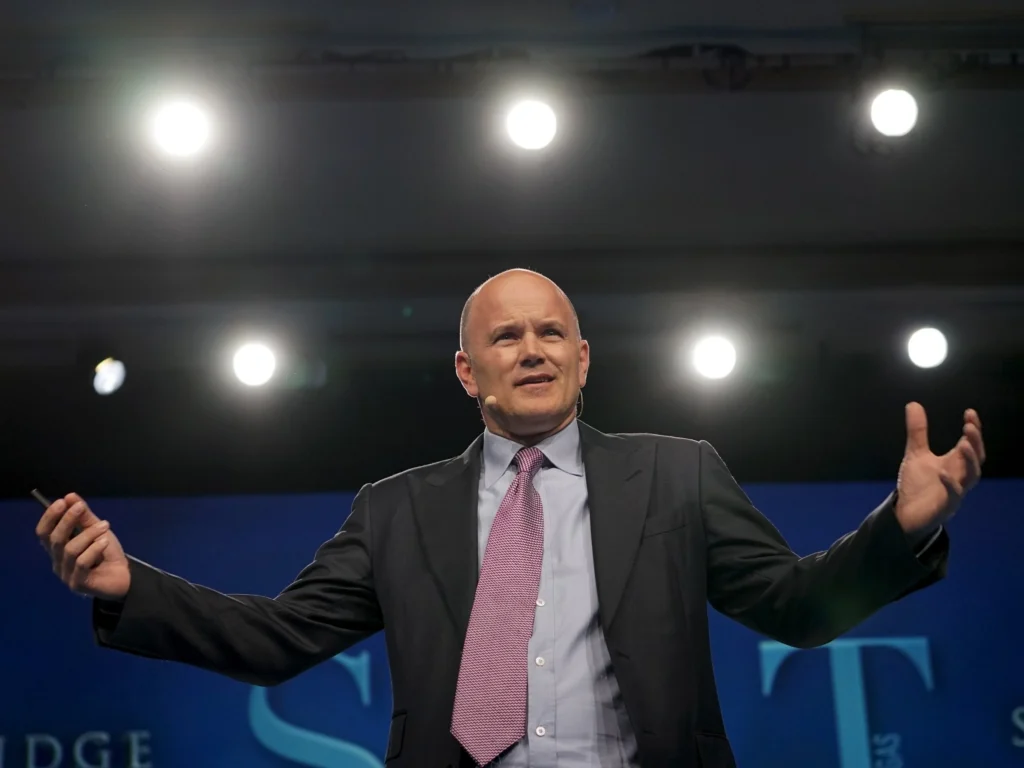
During Novogratz’s and Briger’s stint at Goldman Sachs, fellow partners included Steve Mnuchin, who later became Trump’s Treasury Secretary, Trump’s Chief Strategist Steve Bannon, and Gary Cohn, a former Trump economic adviser. When Fortress launched on the NYSE in February 2007, with Goldman Sachs and Lehman Brothers as underwriters, it was the first large private equity firm in the United States to go public, not to mention making Novogratz a billionaire. “We were the only company, I think to this day, where five guys became billionaires in a day,” Novogratz said.
Novogratz formed Galaxy Digital in 2018. In April 2021, he named another former partner at Goldman Sachs, Michael Daffey, as Senior Advisor and Chair of the Board of Directors. A month prior to the appointment, Daffey had purchased a former Manhattan estate of Jeffrey Epstein – “one of the largest private properties in the city” – after having “raked in big gains on an investment in Bitcoin” due to his friendship with early Bitcoin investor Novogratz. Briger had introduced Novogratz to Xapo’s Wences Casares, whose connections to the PayPal Mafia and his dubbing as “Silicon Valley’s Patient Zero” of Bitcoin are featured in The Chain of Custody, leading Novogratz to invest $7 million in Bitcoin in 2013, when it was worth around a hundred dollars a coin. Not only was Novogratz early to Bitcoin, he was college roommates with a co-founder of Ethereum, Joseph Lubin, while both were at Princeton, and in early 2016, he bought Ethereum when it was worth about a dollar.
Novogratz joined Goldman in April 1989 after a stint as a helicopter pilot for the United States Army, and was promptly sent to Tokyo to “sell Japanese government bonds to U.S. investors.” Jon Corzine, a former New Jersey Senator and Governor who chaired Clinton’s budget committee and later defrauded thousands as head of MF Global, was running Goldman’s fixed-income division during this time, and he sent Novogratz to run their Hong Kong trading desk in 1993. When Asia’s financial meltdown occurred in 1997, Novogratz “successfully shorted the Thai baht,” leading him to tell The New Yorker, “When Asia blew up, my team made a fortune.”
Novogratz would continue to make big bets as a currency speculator, losing “more than a hundred and fifty million dollars” on the Swiss franc, and in 2015, Novogratz and his Fortress colleagues made “huge bets that Brazilian interest rates would fall.” They didn’t, at least not while their position was liquid, leading investors to lose “between seven and fifteen per cent of their assets,” forcing Fortress to shut down their macro fund, and prompting Novogratz to depart the company. Despite the exit, Novogratz’s shares were eventually bought back by Fortress for approximately $250 million.

Novogratz sees the boom in cryptocurrencies as a direct result of the 2008 financial crisis: “I call it the decentralized revolution,” he said. “We don’t trust institutions, we don’t trust authority.” Despite this, his advice for young investors is simple: “pay your taxes!” Novogratz, who served on the New York Federal Reserve’s Investment Advisory Committee on Financial Markets from 2012 to 2015 alongside Bullish investor Alan Howard, made comments on the uncertainty of the current regulatory status of cryptocurrency: “It’s stressful, because the regulatory environment’s not clear. You don’t even know what the rules are. In every country. Even in the U.S.”
In defiance of the murky regulatory status, Novogratz expressed excitement upon joining Bullish: “Bullish’s sheer size and scale combined with Block.One’s experience in high-performance blockchain engineering will make Bullish a formidable player from day one. I’m excited to be on the journey with this team.”
In November 2023, Bullish announced the purchase of CoinDesk from Barry Silbert’s Digital Currency Group, almost exactly a year after the media publication made public the balance sheet woes of FTX and Alameda, leading to the collapse of the exchange and its affiliated trading desk.
The Stablecoin Wars: Clearing The Path For The Digital Dollar
Plenty has been written about the fall of FTX and its founder, Sam Bankman-Fried. In one of the most covered cases of financial fraud in recent memory, the seemingly overnight collapse of his exchange has been detailed in numerous books and documentaries, but few accounts seem to mention the intimate connections between Alameda Research, the trading desk fatally connected to the washing out of SBF’s empire, with Tether. Even fewer address the possibility that the triggered implosion of Terra-LUNA’s UST stablecoin was what led the Bahamian exchange to find themselves over-levered with their own exchange token FTT. This is ultimately a story about stablecoins, and more specifically, who get to issue them, as the conflicting cryptocurrency cartels waged economic warfare via their trading desks in order to best position themselves as the last issuer standing after the fallout of the second Stablecoin War.
As SBF put it in November 2021, just a year before FTX filed for Chapter 11 bankruptcy: “What is the reserve currency of the crypto economy going to be? Right now it’s unambiguously the USD. And interestingly it’s USD whether or not you’re looking at the American crypto economy.”
Sam Bankman-Fried, better known by the three letter acronym SBF, burst onto the crypto scene at the peak of the 2017 bubble, founding Alameda Research that September, just four years after graduating from an internship into a full-time position at one of the world’s largest market makers, Jane Street Capital. SBF is the son of Stanford Law professor and founder of left-wing super PAC Mind The Gap, Barbara Fried, and Stanford professor Joseph Bankman, an expert on tax shelter laws and government regulation. At the start of 2018, SBF had struck digital gold while taking advantage of the arbitrage opportunity presenting itself between a higher demand for bitcoin in the Asian market, colloquially known as the “kimchi premium.” By the end of the year, and after amassing a considerable fortune from this high-volume bitcoin/dollar spread, he officially moved to Hong Kong, formally founding the derivatives exchange FTX in the following spring.
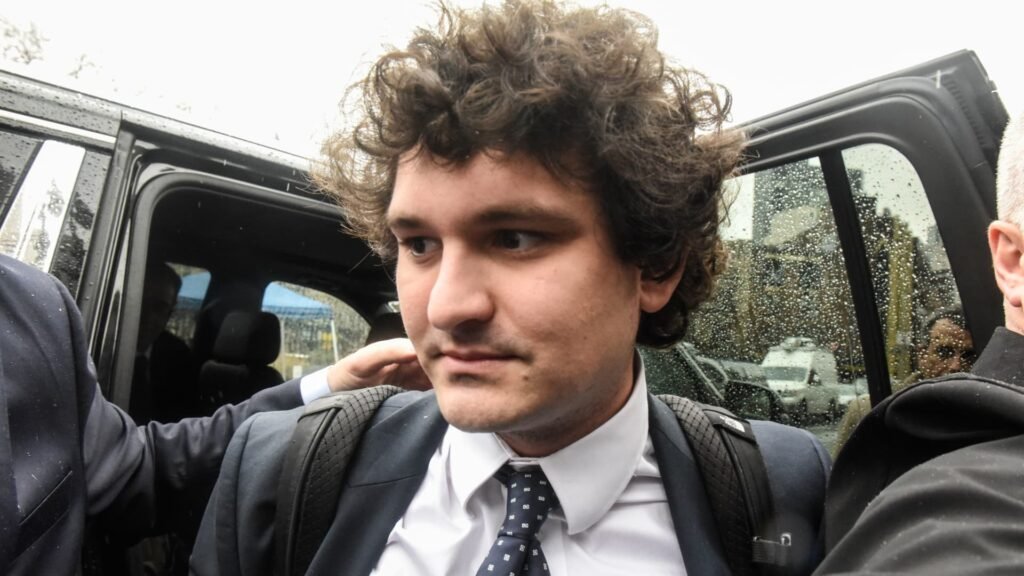
In June 2019, one month after the founding of FTX, Facebook’s Mark Zuckerberg announced Libra, a digital currency based on a basket of international currencies; a novel take on stablecoins. This launched the stablecoin and CBDC race in earnest, and coincidentally enough, the Central Bank of the Bahamas became the first such institution to announce its own CBDC, the sand dollar, in October 2020. The sand dollar itself was pegged to the Bahamian dollar, which is itself pegged to the United States dollar, and thus with its government-sanctioned launch, the birth of the first central bank-issued stablecoin dollar came to be on the sandy beaches of SBF’s new home.
While the U.S. government feigned fear of systemic risk at the time, the Chinese government understood the Libra project to be an effort to covertly dollarize the G7 currencies rumored to be included in its basket. A Metaverse-held take on the 1985 Plaza Accord, this plan of coordinated central banking would spread USD network users across the internet’s biggest network, sped up by the high velocity available in centralized digital payments and globalized by the borderless nature of the Facebook user base. The digital yuan was trialed in April 2021 with great haste in reaction to this development and, by the Winter Olympics 2022, it had launched for foreign attendees in Beijing.
Only a few weeks after SBF hosted a keynote with former U.K. Prime Minister Tony Blair and President Bill Clinton at the FTX-organized Crypto Bahamas conference, one of the largest-ever over-the-counter bitcoin purchases was announced by the LUNA team. Terraform Labs and the non-profit Luna Foundation Guard, two entities headed by Do Kwon, had begun a campaign to purchase bitcoin as a reserve asset in the event that their algorithmic stablecoin, UST, deviated from its $1 peg. Do Kwon had previously attempted an algorithmic stablecoin, Basis Cash, which raised $133 million from Andreessen Horowitz, Bain Capital Ventures, Lightspeed Ventures, Google Ventures, and the Digital Currency Group, among others. Shortly before Terra’s collapse, the plan had ballooned to the lofty goal of stacking over $10 billion. This purchase was financed with Three Arrows Capital, or 3AC, and was facilitated by now defunct cryptocurrency broker Genesis.
With the bitcoin reserves of Luna Foundation Guard totaling 80,394 bitcoin, valued at over $3.1 billion on May 5, 2022, this purchase placed LFG among the top-10 bitcoin holders in the world. Shortly thereafter, the peg was attacked, the recently-purchased bitcoin fortune was liquidated, Binance, led by CEO Changpeng Zhao (CZ), who was given his first job in crypto by Brock Pierce, aptly halted all trading on LUNA and UST pairs – with a notable exception for their own stablecoin BUSD – and Kwon seemingly fled outside of U.S. jurisdiction to Asia.
Ironically, SBF himself, despite listing LUNA and UST on his exchange, had predicted such a collapse on the Odd Lots podcast: “If you do zoom out, right, and you say, ‘This is a stable coin, backed by volatile assets, what’s gonna happen in a big market move.’ Right? Like, you know how this plays out.”
According to an audit released in November 2022, over 33,000 bitcoin were transferred to Binance on May 10, 2022, and sold along with other assets while failing to defend the peg. The same day the nearly $1 billion worth of bitcoin hit Binance’s order books, bitcoin’s USD price broke below $30,000, falling from $40,000 just a week before.
Two years before LUNA fatally lost its peg, Nicholas Platt, the head of research at Terra, announced the Anchor protocol in July 2020. A few months later, in September 2020, Kwon himself introduced UST, the stablecoin native to Terra’s blockchain. Both of these products ultimately set in motion the market moves that would eventually take down not only Terra itself, but likely FTX and Alameda as well.

The Anchor protocol was created by Ryan Park, who received a Thiel Fellowship in 2022 to pursue the building out of the yield product based on Terra’s blockchain. The announcement of the 2022 Thiel Class described Anchor as “a DeFi savings protocol that offers stable and attractive yields on stablecoin deposits” via “tap[ing] into block rewards of major proof-of-stake blockchains to generate yields countercyclical to market fluctuations.” Two days after the announcement, Park took to his Twitter to express being “Excited to be a Thiel Fellow!” In line with the remarks from the Thiel-funded Freeman of Reserve, Park also expressed that Anchor was “developed with interchain access in mind,” “enabling 20% APY regardless of blockchain or stablecoin type,” with plans for Anchor to “expand to support various stablecoins across a multitude of blockchains.”
Decrypt’s Liam J. Kelly wrote a prophetic piece in April 2022 titled “We Need to Talk About Terra’s Anchor,” in which he wrote:
“In other words, just about everything Anchor-related is happening on Terra. Indeed, with roughly $16 billion in value on Terra’s Anchor, the project constitutes over half of all DeFi activity for the Terra ecosystem. Across all chains, Anchor is also the DeFi sector’s third-largest app, after the Ethereum staking platform Lido and the stablecoin exchange Curve. That means more than 72% of all UST is currently deposited in Anchor, which is nuts…
Back in February, Do Kwon, the founder of Terraform Labs and the face of Terra, added $450 million into the reserves. Analysts have raised alarm bells over this dynamic, with Arca CIO Jeff Dorman saying that ‘Anchor needs constant capital infusions’ to maintain the current yield…Without a clear, long-term solution, though, the rate will continue to decrease. After a certain threshold, which the market will decide over time, investors will generate returns elsewhere. This could lead to withdrawals from Anchor and investors potentially abandoning UST for another stablecoin that can be used for more lucrative opportunities in some other DeFi protocol.
If this rotation were to happen en masse, it could be catastrophic for the health of UST as well as LUNA.”
In this piece, Anchor was described as “basically a high-interest savings account for TerraUSD (UST) stablecoins, the crypto market’s third-largest stablecoin by market cap,” allowing users to “earn a steady rate of 19.46% for deposits.” Kelly’s follow up piece, written just a month later in May 2022, noted that this near 20% yield simply couldn’t last, and as Anchor began reducing the interest rate, so, too, did users lose interest in keeping their funds there. On April 23, “more than 72% of all UST in circulation was locked up in Anchor,” and on May 6, nearly 14 billion UST sat in Anchor. By May 8, under 12 billion remained, which due to its then-stable dollar peg, meant “roughly $2.3 billion in capital took flight over the course of last weekend.” By May 9, that number dropped below 9 billion, and UST reached lows of nearly 30 cents. By May 11, 11 billion UST had been withdrawn from Anchor in just two days. As Kelly put it:
“UST depegged by a little less than $0.02 over the weekend as Anchor departees swooped in and began flipping UST for any other stablecoin, be it Tether’s USDT or Circle’s USDC.
Eventually, the specific pool that allowed for these trades (called the “UST + 3Crv” pool, which also pools all the major stablecoins) became unbalanced, meaning there was far more UST than the other stablecoins in the pool.
And at this time, at least one investor dumped more than 85 million UST tokens in exchange for 84.5 million USDC tokens in this pool. This, of course, put even more pressure on UST’s dollar peg as Curve continued to create the discount hoping to incentivize arbitrage traders to rebalance the pool. And down you go.
Soon, everyone on the internet was watching UST lose its peg and LUNA plummet in price.”
By May 10, UST was valued at 32 cents below a dollar, and the LUNA token dropped from $64 to “below $30.” Kwon’s Luna Foundation Guard “stepped in” and sold “a ton of non-UST stablecoins” with “approximately $216 million c[oming] from Jump Crypto” into Curve to “help the stablecoin find its peg.” Shortly after the stablecoin deployment, LFG reportedly “began deploying the Bitcoin holdings” it had stockpiled to a “professional market maker” who was “essentially told to spend BTC when UST is below the peg.” Promptly, UST “jumped from $0.64 back to $0.93.” This did not last long however, as “exits through Curve ate through the bailout liquidity” and it remained “unclear whether that BTC was ever actually used to defend the peg.” LUNA “continued to plummet” as folks sold their 9/10ths of a dollar UST before dumping their LUNA. Kwon “doubled down,” and “opened up how much LUNA can be minted at a time.” LUNA had a 343 million circulating supply on May 8, but by May 12, the marketcap had “ballooned to 32.3 billion.”
On May 7, the LFG totaled their assets consisting of 80,394 bitcoin, $26.2 million USDT, and $23.5 million USDC, in addition to their UST holdings. On May 16, the LFG stash had been plundered, leaving the group with 313 bitcoin, 222.7 million LUNA, and nearly $2 billion in UST, with blockchain analytics firm Elliptic claiming that the $3.5 billion in bitcoin had been sent to Gemini and Binance to be liquidated while defending the peg. Another analytics firm, Nansen, led an on-chain investigation that “revealed that a small number of players identified vulnerabilities early into the UST de-peg,” specifically “in the relatively shallow liquidity of the Curve pools securing TerraUSD (UST)’s peg to other stablecoins,” and eventually “moved to exploit these.” Nansen would refute the narrative of this being one attacker, but did conclude that “the de-peg of UST could instead have resulted from the investment decisions of several well-funded entities.”
Ironically, Kwon had previously called such an attack on the peg, described by Freddie Raynolds as a “Soros style Black Wednesday attack,” as “retarded.” The SEC’s statements on the matter was slightly more nuanced, leading SEC Chair Gary Gensler to “allege that Terraform and Do Kwon failed to provide the public with full, fair, and truthful disclosure as required for a host of crypto asset securities… We also allege that they committed fraud by repeating false and misleading statements to build trust before causing devastating losses for investors.”
Gurbir S. Grewal, the Director of the SEC’s Division of Enforcement stated that “as alleged in our complaint, the Terraform ecosystem was neither decentralized, nor finance. It was simply a fraud propped up by a so-called algorithmic ‘stablecoin’ – the price of which was controlled by the defendants, not any code.”
According to the SEC filing, “by the end of May 2022, UST, LUNA, wLUNA and MIR were essentially worthless, wiping out more than $40 billion in combined market value.” Of note, in Section 172, is the accusation that Kwon repeatedly transferred Bitcoin from Terraform to a Swiss bank in order to cash out “over $100 million in fiat currency” since June 2022:
“172. Defendants still retain valuable proceeds from the Terraform ecosystem. Specifically, Defendants transferred over 10,000 Bitcoin from Terraform and Luna Foundation Guard crypto asset platform accounts to an un-hosted wallet, or “cold” wallet (i.e., a self-custody wallet that is not on any exchange). On a periodic basis since May 2022, Terraform and Kwon have transferred – and continue to transfer – Bitcoin from this wallet to a financial institution based in Switzerland and have converted the Bitcoin to cash. Between June 2022 and the date of this complaint, over $100 million in fiat currency has been withdrawn from that Swiss bank.”
In support of the idea of a stablecoin war brewing, at the end of June 2022, Coinbase announced they would be “unifying USD and USDC order books” to “to create a better, more seamless trading experience with deeper liquidity for USD and USDC.” Circle, the entity behind the USDC stablecoin, had previously expanded their international offerings with a subsidiary operation based in Bermuda with an announcement made on July 22, 2019. This entity, filed under the Digital Assets Business Act of 2018 (“DABA”) meant that Circle was the first major stablecoin issuer to receive a Class F (“Full”) DABA license that covered their operation of custody, payment services, exchange, trading and more financial services within the digital asset realm. Circle’s other banking partners, Signature Bank’s Signet and Silvergate Capital had made USD loans to Celsius, Voyager, Block Fi, Three Arrows Capital and Alameda Research. All have since filed for bankruptcy. Novogratz’s Galaxy Digital also suffered significant losses.
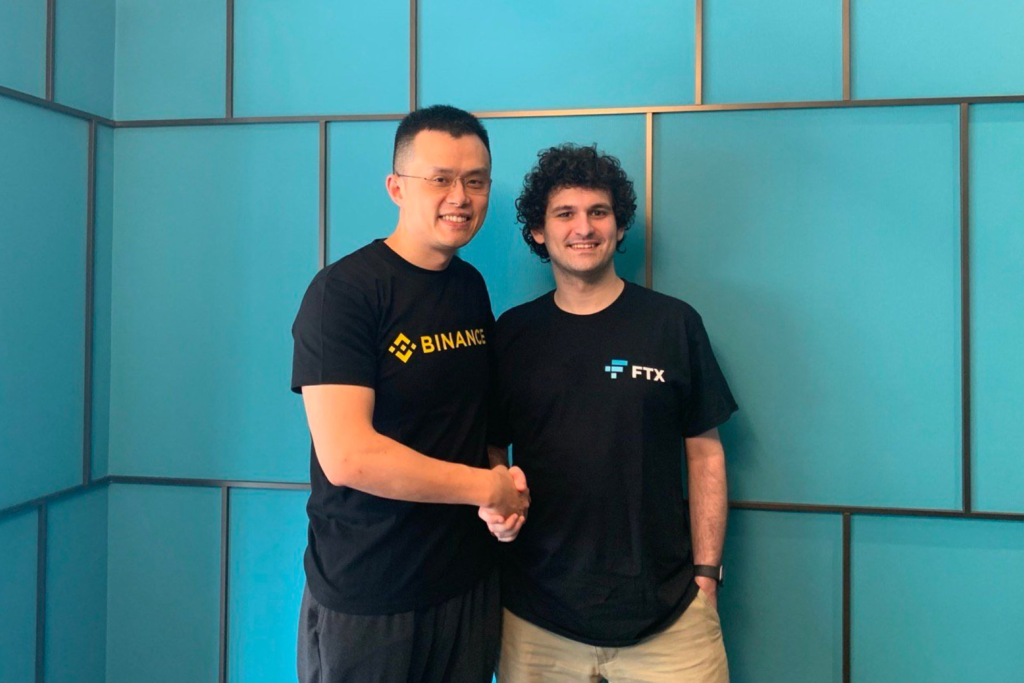
In September 2022, Binance would do a similar play, converting their USDC, USDP and TUSD order books to their stablecoin BUSD, issued by Paxos. SBF commented on this conversion, dubbing the aftermath as the start of “the Second Great Stablecoin War.” The first one, according to SBF’s tweet, was “fought in ~2018,” and “ended with USDC and USDT edging out TUSD/GUSD/USDP.” With the change in order books taking effect in just 25 days, this led to continued concerns about Binance’s solvency as the preceding few months, especially July 2022, had seen the largest known outflows of bitcoin in the exchange’s history, eclipsing even March 2020’s lockdown-induced market crash.
On October 24, the MakerDAO, “the largest single holder of USDC,” approved a community proposal to custody nearly $1.6 billion USDC with Coinbase Prime. Four days later, Nikolai Mushegian, the co-founder of “the largest decentralized finance protocol” MakerDAO, the architect of DAI, a contributor to Larimer’s BitShares, and inventor of the DAI-fork stablecoin Rai, tweeted that his life was in danger due to a Caribbean island blackmail ring, supposedly backed by Israeli and U.S. intelligence agents. At the time of this tweet, he was “working on a crypto project called Rico,” a “free-floating decentralized stablecoin system” aiming to be the “spiritual successor of DAI” and designed “without compromises.” Three days later, on Halloween, the 29-year-old coder Mushegian was found dead, having drowned in the sea off Condado Beach in Puerto Rico. He was “wearing his clothes and had his wallet on him,” sources told The New York Post.
“CIA and Mossad and pedo elite are running some kind of sex trafficking entrapment blackmail ring out of Puerto Rico and caribbean islands. They are going to frame me with a laptop planted by my ex gf who was a spy. They will torture me to death.”
Nikolai Mushegian, October 28, 2022
Upon his death, his friend Brock Pierce was quoted as saying “his mother clarified that his death had nothing to do with his [conspiracy] tweets,” and that “intelligence agencies are not hunting down crypto pioneers.” He furthered that “if the government were knocking off people in this field, I would know.” But another source said “Meshugian [sic] was in communication with federal agencies, possibly including the CIA.” “Some of his paranoia was based on fact,” the source said. “He’d discover things. He knew things… It wasn’t for the money. He was interested in why things were the way they were and the corruption behind it.”

On October 26, 2022, Core Scientific, the then-largest Bitcoin mining operation in the world, filed for bankruptcy in part due to “money owed to it by crypto lender Celsius” with millions of dollars in debt liabilities, thousands of Bitcoin miners, and yet in their filings, held only 24 bitcoin total at the time of its failure. On that same day, barely two weeks before the FTX collapse, Binance saw its largest single day outflow, with 71,579 bitcoin, totaling over $1.1 billion in dollar terms. This pushed net outflows to nearly 95,000 bitcoin from the world’s largest exchange since just that July. The very next day, October 27, 2022, SBF had appeared on The Big Whale and announced future plans for FTX to launch its very own stablecoin.
Two days later, on November 2, 2022, CoinDesk reporter Ian Allison released findings that over a third of all assets – around $5.8 billion of $14.6 billion – on the balance sheet of SBF’s Alameda Research was intrinsically, and soon to be fatally, linked to FTX’s exchange token FTT. A “bank” run commenced, and after three days of nearly $6 billion in withdrawals, FTX was left with literally one single bitcoin. Where exactly did all this bitcoin go?
The next day in an interview with Fortune, Coinbase founder and CEO Brian Armstrong made note that USDC will become the de facto central bank digital currency in the U.S. He also stated that:
“The policymakers in the U.S. will set the framework that need to be followed so that the private market will actually create the solutions, and USD coin has been on a really rapid rise… the regulatory environment is one of the biggest unlocks we’re going to have in terms of growing this industry and perhaps even getting the prices to go back up in the right direction”
– Brian Armstrong, November 3, 2022
On November 6, 2022, CZ announced Binance would liquidate a remaining portion of FTT it had acquired from exiting FTX’s equity, having received around $2.1 billion in BUSD and FTT. Minutes after his announcement, Caroline Ellison, SBF’s partner and the CEO of Alameda Research, offered to purchase the tokens at $22 each, in an over-the-counter fashion. By November 8, CZ and SBF had a phone call and seemingly came to a tentative deal for acquisition, reserving the right to back out of the deal at any time, while interestingly also leaving both U.S.-based proprietary exchanges, Binance.us and FTX.us, outside the scope of the deal. “Things have come full circle, and FTX.com’s first, and last, investors are the same: we have come to an agreement on a strategic transaction with Binance for FTX.com (pending DD etc),” SBF tweeted.
Later that evening, FTX officially suspended all asset withdrawals. As part of the conditions of the acquisition, SBF was forced to open the FTX books and show the bottom of his pockets. Seeing more sand than dollars, CZ backed out of the deal. “Liquidating our FTT is just post-exit risk management, learning from LUNA. We gave support before, but we won’t pretend to make love after divorce. We are not against anyone. But we won’t support people who lobby against other industry players behind their backs. Onwards,” CZ tweeted on November 6, 2022.
Searching for FTX on FEC.gov brings up 456 individual campaign contributions from SBF, CEO Ryan Salame, and others. Salame’s contributions total over $14 million towards GOP candidates, while SBF’s “effective altruism” saw him contribute over $20 million in donations to DNC politicians. Having been the second leading donor to the Biden campaign, by the time the final tallies from election night rolled in, SBF’s bankroll had finally caught up with his morals, and he found himself nearly completely bankrupt.

By November 9, 2022, the day after the elections, SBF had reportedly lost 94% of his net worth, down to $1 billion from more than $15 billion, leaving him with the largest single-day loss by a person according to the Bloomberg Billionaire Index. Early in the morning of November 10, SBF took to Twitter to explain what happened, writing “I’m sorry. That’s the biggest thing. I fucked up, and should have done better”, before making a specific note that “THIS IS ALL ABOUT FTX INTERNATIONAL, THE NON-US EXCHANGE. FTX US USERS ARE FINE!”
The collapse even led to comments from the White House on November 10, 2022, with Press Secretary Karine Jean-Pierre stating: “The administration […] has consistently maintained that without proper oversight, cryptocurrencies risk harming everyday Americans…The most recent news further underscores these concerns and highlights why prudent regulation of cryptocurrencies is indeed needed.”
On the eleventh day of the eleventh month, FTX and Alameda Research officially filed for Chapter 11 bankruptcy protection, and SBF stepped down as CEO. In addition, 130 affiliated companies connected or associated with FTX also commenced voluntary proceedings under Chapter 11. On November 15, just four days after the SBF tsunami crashed to shore, BNY Mellon, as well as a dozen or so other banking institutions, announced the start of a twelve-week digital dollar pilot program with the Federal Reserve Bank of New York. On the very same day, BlockFi announced plans for bankruptcy filings, only five months after taking a $250 million loan from FTX.
Nansen, a blockchain analytics firm, went on to claim that FTX’s failure was “likely the result of the liquidity crunch brought on by the Terra-LUNA collapse,” leading to solvency issues with Alameda Research. In their report, they summarize their findings, stating:
“With the fallout of Terra and 3AC in May/June, it is likely that Alameda experienced liquidity issues as a result of the declining price of FTT, which was likely utilized as loan collateral. Did Alameda receive an FTT-backed loan from FTX? Our on-chain data indicates that this may have happened. Amidst the collapse of 3AC in mid-June 2022, Alameda sent ~163m of FTT to FTX wallets, worth ~$4b at that time. The $4b transaction volume interestingly coincides with the $4b loan figure from FTX to Alameda that was revealed in the Reuters interview.
Prior to the publication of CoinDesk’s report, we observed a number of unusual transactions between FTX and Alameda during Sep 28 and Nov 1. These included a $4.1b transfer of FTT tokens from Alameda to FTX and several continuous transfers of stablecoins amounting to a total of $388m USD into Alameda’s wallets from different sources.”
These stablecoin transfers should be no surprise given that Alameda Research was Tether’s second largest customer, accounting “for nearly a third of all Tether minted.” Alameda Research was involved in the minting of $39.55 billion USDT, with Coinbase Director Conor Grogan claiming this actually accounted for 47% of Tether’s current circulating supply, as of October 2023. Accusations of collusion between FTX, Alameda and Tether grew, including a lawsuit that alleged “that SBF’s trading arm, Alameda Research, artificially inflated the growth of Tether using a secret short-term line of credit worth billions of dollars from the Bahamas-based Deltec Bank.” According to reporting by The Daily Coin, the lawsuit proposes that “SBF’s companies started opening accounts at Deltec in 2018” in order to “facilitate easier access to Tether,” only for Alameda to later “transfer funds from its Deltec account to Tether’s to create USDTs.” Allegedly, Alameda would “receive these tokens days before paying for them” and thus “subsequently capitalize on arbitrage opportunities.”
The lawsuit further contends “that Deltec played a major role in facilitating SBF’s misappropriation of customer funds” by “transferring them between FTX and Alameda accounts.” Not to be a one-sided affair, in October 2021, after the bank “failed to raise loan capital,” Deltec “received a $50 million loan from an entity controlled by FTX executive Ryan Salame.” In addition to this loan, Alameda “invested $11.5 million into Moonstone Bank,” a tiny Washington state bank owned by Deltec’s Chalopin, featured in two pieces on Unlimited Hangout. As noted in those reports, Moonstone Bank was seeking to partner with a dollar stablecoin issuer, Fluent Finance.

After the FTX collapse, the firm hired John Ray III as CEO to sort out its books, with Ray being most famous for the similar role he played in the aftermath of the Enron collapse. FTX also employed the services of U.S. law firm Sullivan & Cromwell, which had previously employed Thiel and Keith Rabois of the PayPal Mafia – not to mention their employment of former CIA Director Allen Dulles. Their associations with FTX, which started before the collapse, led to a lawsuit alleging they conspired with FTX to mislead investors. The firm earned “more than $180 million in fees for its FTX bankruptcy work,” equating to “about 10% of its 2022 revenue,” according to the lawsuit. Thiel himself was a shareholder of FTX, and PayPal invested alongside Alameda Research in the Max Levchin-advised Anchorage Digital, the only OCC-chartered cryptobank. Anchorage recently announced it will be issuing rewards for PayPal’s PYUSD. The issuer of PYUSD, Paxos, was also funded by Alameda Research.
Freeman, the founder of the Thiel-backed Reserve had predicted the collapse of LUNA, and in a follow up blog post during the aftermath stated:
“It is essential that we do not allow Algorithmic stablecoins to be used as a savings and spending tool by the broad population. It’s not practically feasible for every individual to become an expert on monetary dynamics before they decide which financial products to rely on. As an industry, we absolutely must call out any further attempt at popularization of Algorithmic stablecoins among non-sophisticated users, and our exchanges and wallets must not support their mainstream use.”
Pierce himself made comments on the collapse of FTX to Roundtable Media, of which he is a founder, stating: “In the long run, anything that doesn’t kill you makes you stronger. This battle tests the sector; it hardens the sector, it educates the sector, in some through a negative lesson, but a lesson nonetheless.” As for Terra’s LUNA, Pierce commented “the problem with this experiment is that people put too much trust in it too soon,” but further stated “there is a place for them in the future,” regarding algorithmic stablecoins.
Pierce’s old friend Blumer described Pierce as an orchestrator of seemingly separate businesses that collaborate towards a desired goal:
“Brock has the ability to orchestrate, and he’s able to orchestrate different pieces of a business…Brock is an orchestrator and I would say I’m as well. This is the ability to put different pieces of business together and have them all coincide so you can reach a launch or reach an achieved goal…Brock’s the kind of person that can recognize two different businesses, he can conceive a business that is actually the sum of three different businesses…What he can bring to the table is the ability to say, this business, and this business, and this business, will equal this business…I know he’s involved in a lot of things with, and I don’t want to give too much. I’ll let it come from him, but I know he’s involved in a lot of things in China, even in participating with the Chinese government in terms of regulations… I know he has some plans able to take this company and another company and augment it with the support of maybe a regulatory body to create something that is truly spectacular. I’m sure you guys will hear more about it very soon.”
Brendan Blumer to Mixergy
From a distant perspective, it is entirely possible the setup and knockdown of FTX and Terra-LUNA was by design, in part to make the currency speculators strewn among the associated ventures billions in dollars and bitcoin, and furthermore manufacture consent among retail investors – and the legislators that set the terms of the U.S. market – to push users towards desired issuers of private capital, and away from algorithmic alternatives. While Thiel, Pierce and his ilk are seemingly interested in taking the power of capital creation distinctly away from the public sector, the information banking and FinTech cartel described in The Chain series seemingly have every intention of being the private entities that survive the ensuing government regulations and the marketplace war-games familiar to these speculating billionaires.
Despite Thiel’s intimate relationship with Facebook, and many of his affiliates being connected to the social network’s attempt at a stablecoin, PayPal’s very own PYUSD has only recently started to make its move to capture market share from its competitors: a market that is poised to dominate payments, and even store of value use cases, for billions across the globe. Bitcoin may have kickstarted the conversation of, once again, bringing capital creation back into the hands of the people. However, the inability for Bitcoin to gather consensus for the changes needed to meet the needs of a truly global payments system has created a huge demand for dollar-backed stablecoins. This newly-discovered territory will be fought over by the controlling payments cartel, and little ground will be given up without a serious fight from banks, FinTech firms, currency speculators, and even government intelligence.
As SBF put it: “At some point I might have more to say about a particular sparring partner, so to speak. But you know, glass houses. So for now, all I’ll say is: well played; you won.”
Around the same time that FTX and Terra-LUNA collapsed, similar issues were found within the U.S. regional banking system, including the failures of Silvergate, Signature and Silicon Valley Bank. Further inspection of these bank issues finds connections with Peter Thiel, stablecoin issuers, and many of the mentioned stalwarts of the blockchain industry. Concurrently, a stablecoin bill was proposed by the Senate, led by lobbying efforts from CoinCenter and the Digital Chamber of Commerce, with many parts of the proposal relating to the aftermath of FTX and Terra-LUNA. All of this, plus the building and dismantling of Facebook’s Libra, will be covered in the final piece of The Chain series, to follow shortly.
To Be Continued

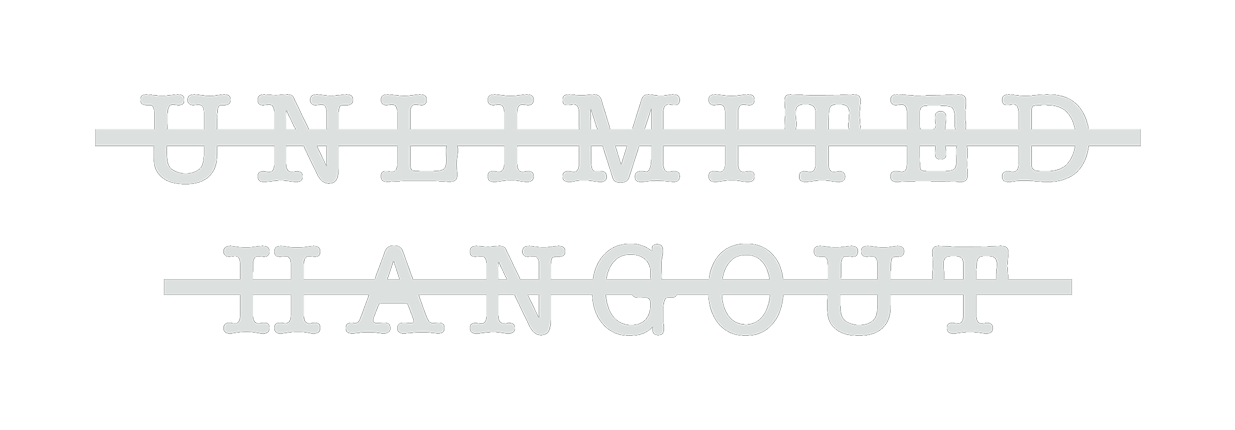








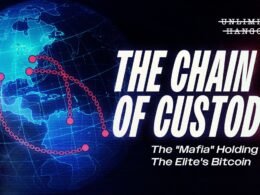
Mark does a very deep dive into the minions, their fronts, and their tactics, who are (and have been) switching the original Bitcoin Revolution from an ‘escape from the bankster’s clutches’ revolution, into a right back into their monopolistic hands non-revolution.
Is there a possibility to add a PDF version to this and other articles, so that they can be printed in a convenient format? Thanks!
In a Bible length “expose” featuring Brock Pierce
“find in page”……..Nikolai Mushegian……..not one single mention
You are busted Goody!
Same thing with all that crap from Whitney Webb…….Mega group this and that…….but no mention of Henry Kissinger and David Rockefeller……..her theory involves dead men and nobody’s like the Bronfman’s
You can use the print function of your browser and save this page as a pdf.